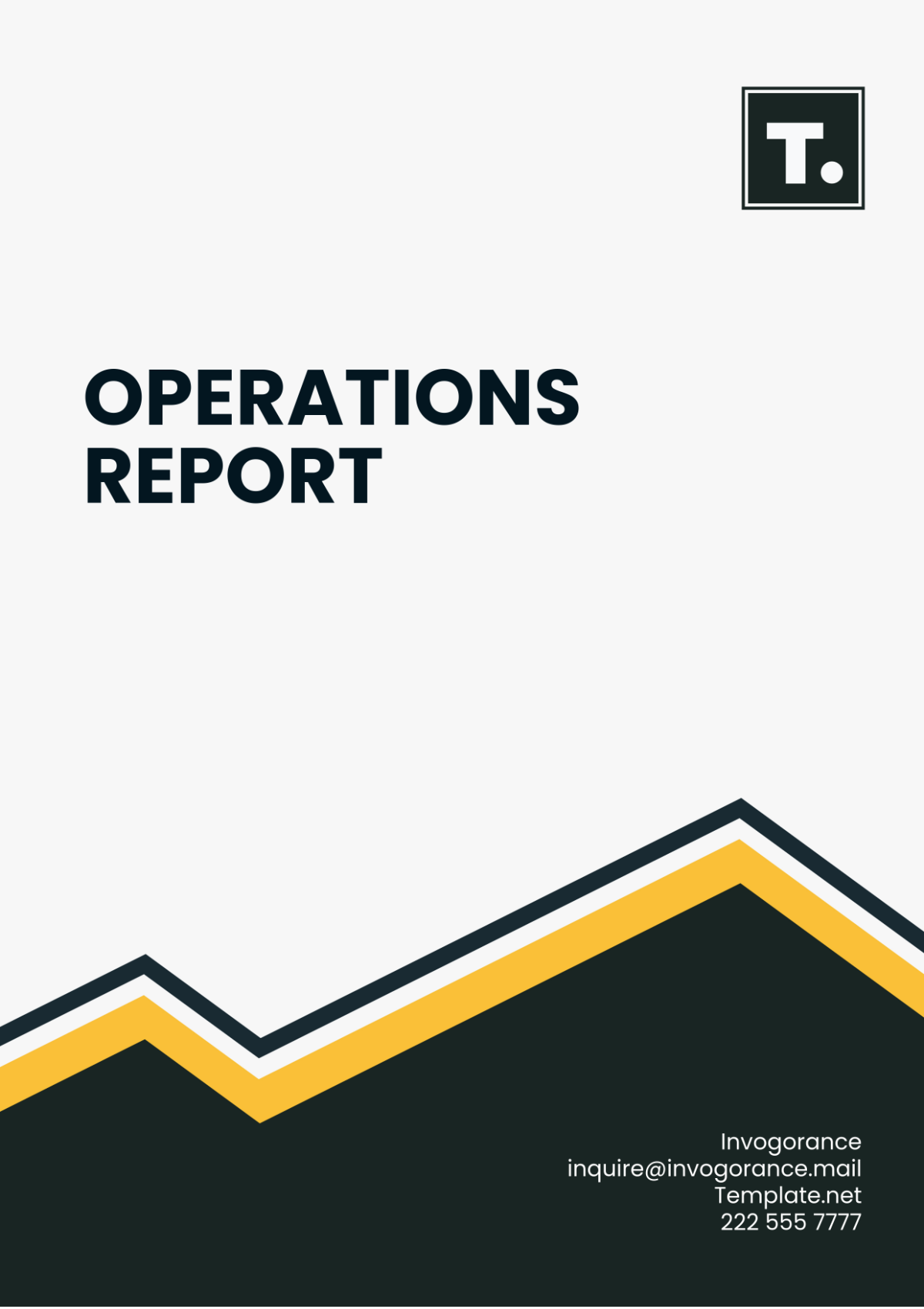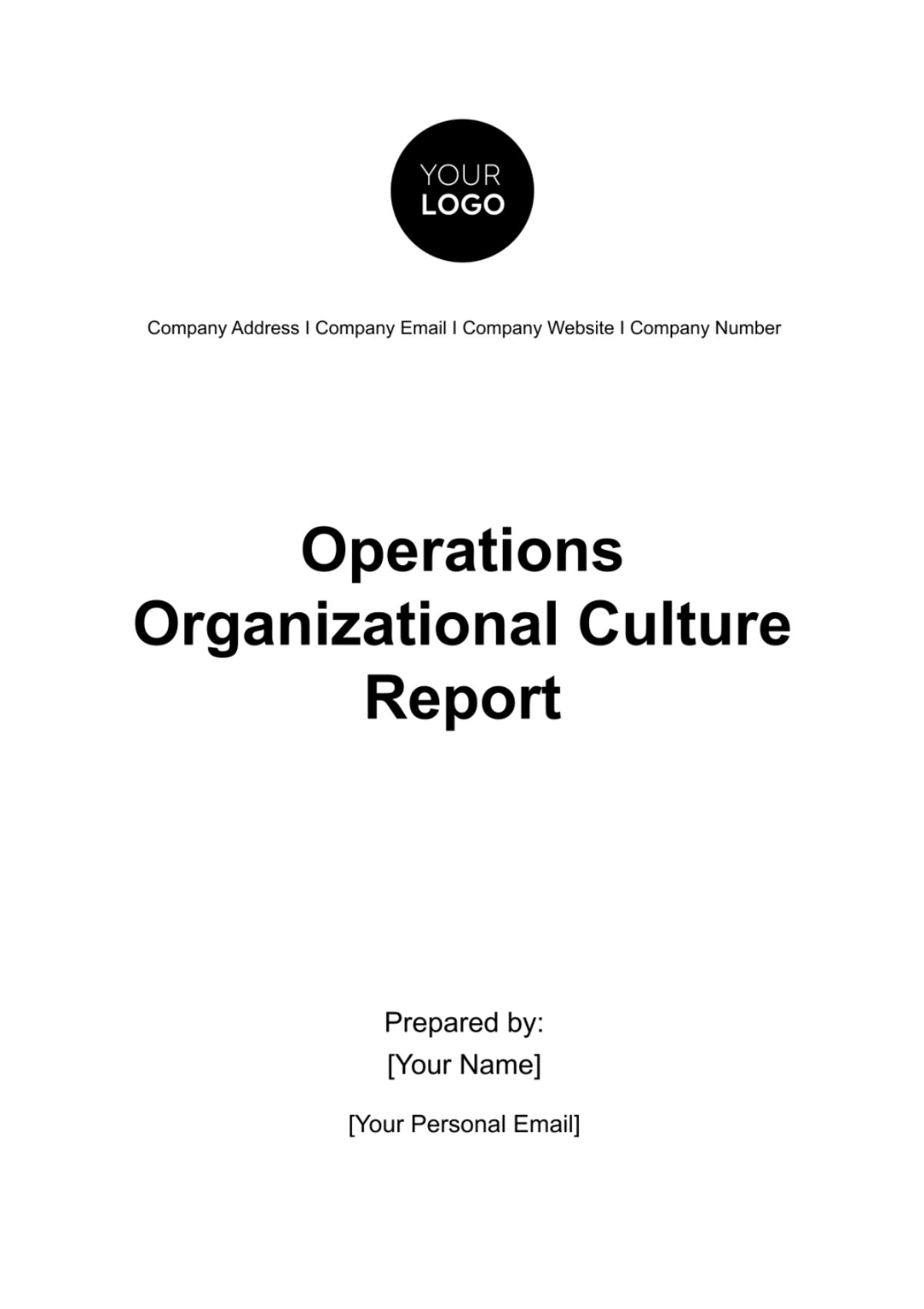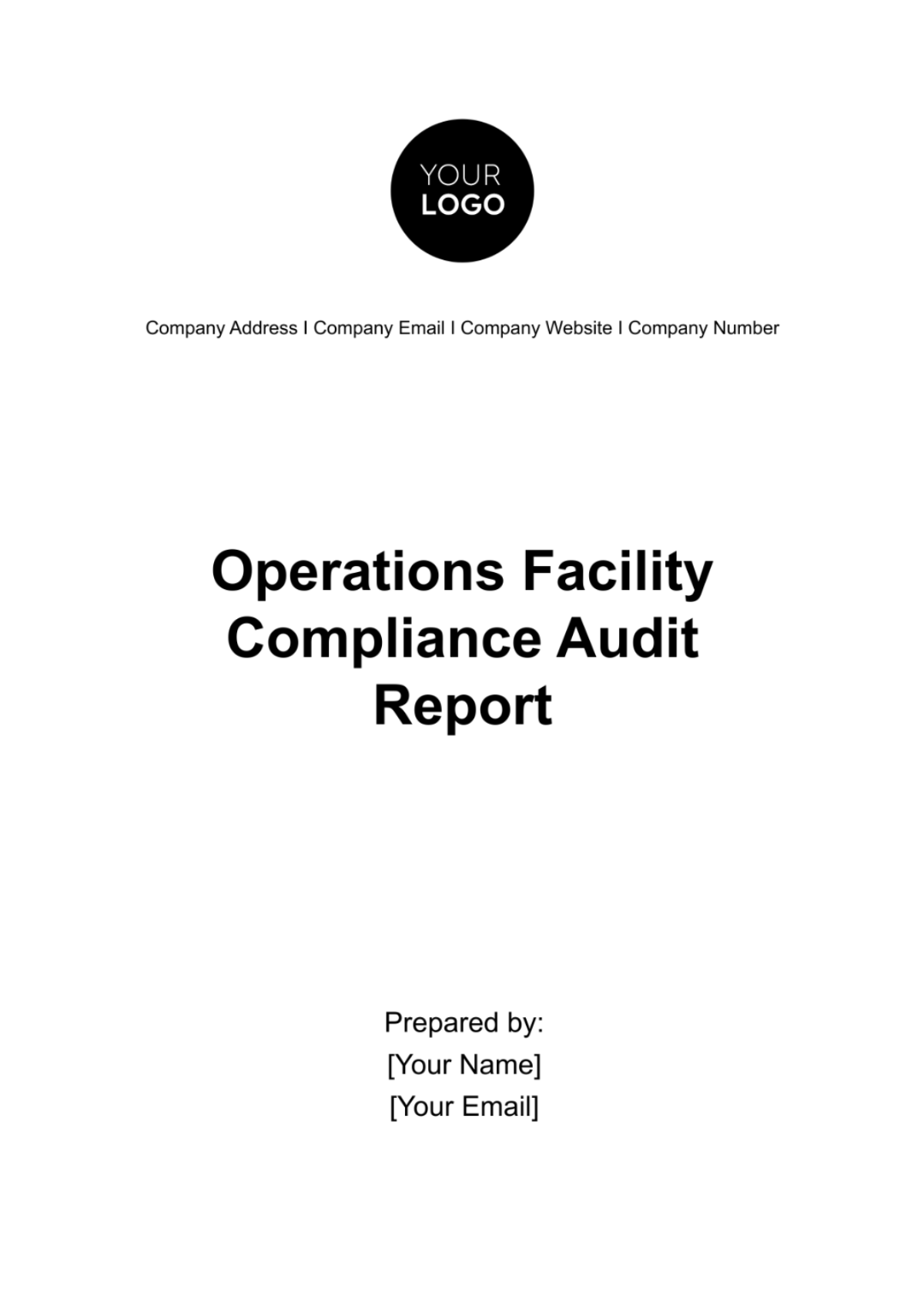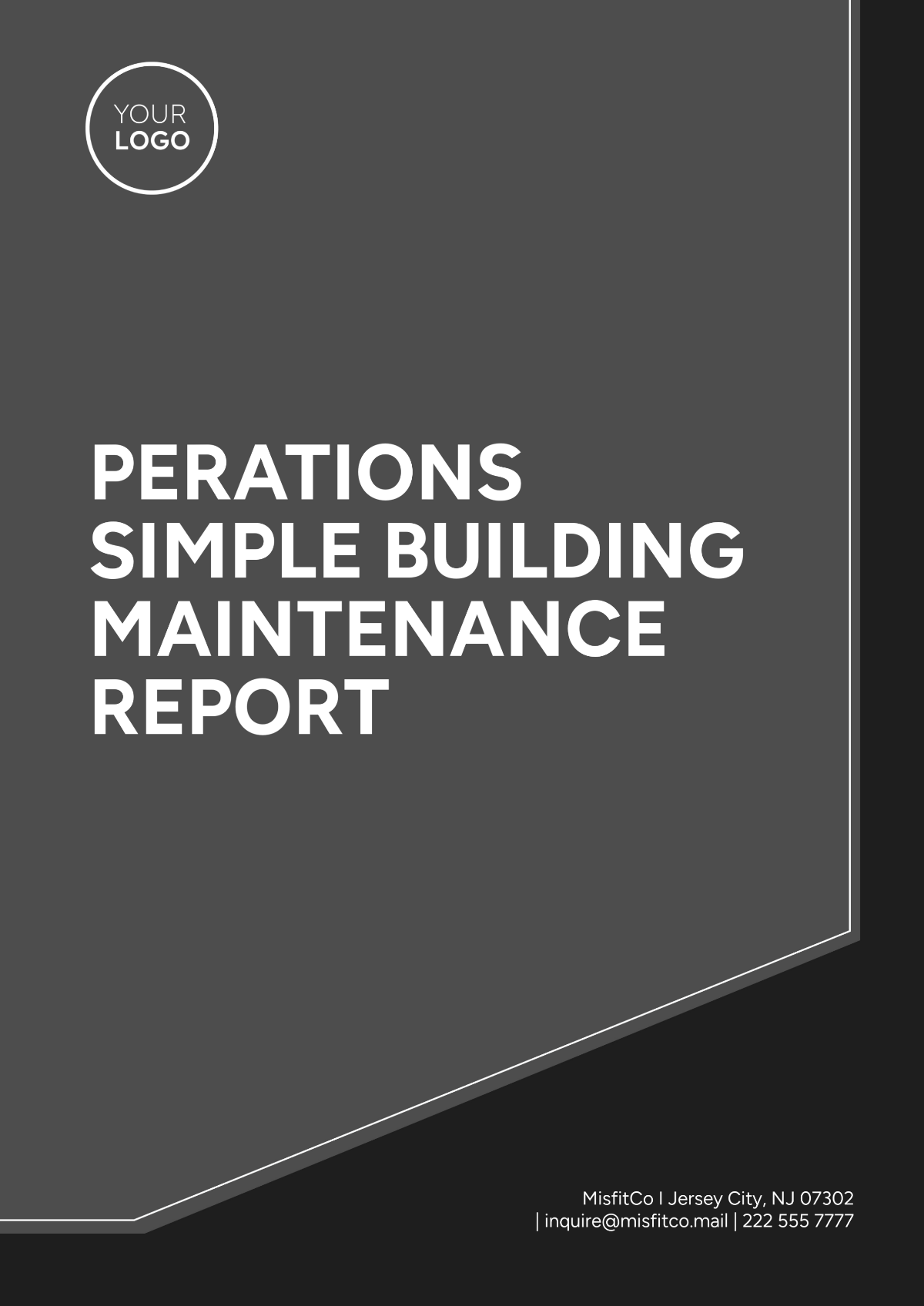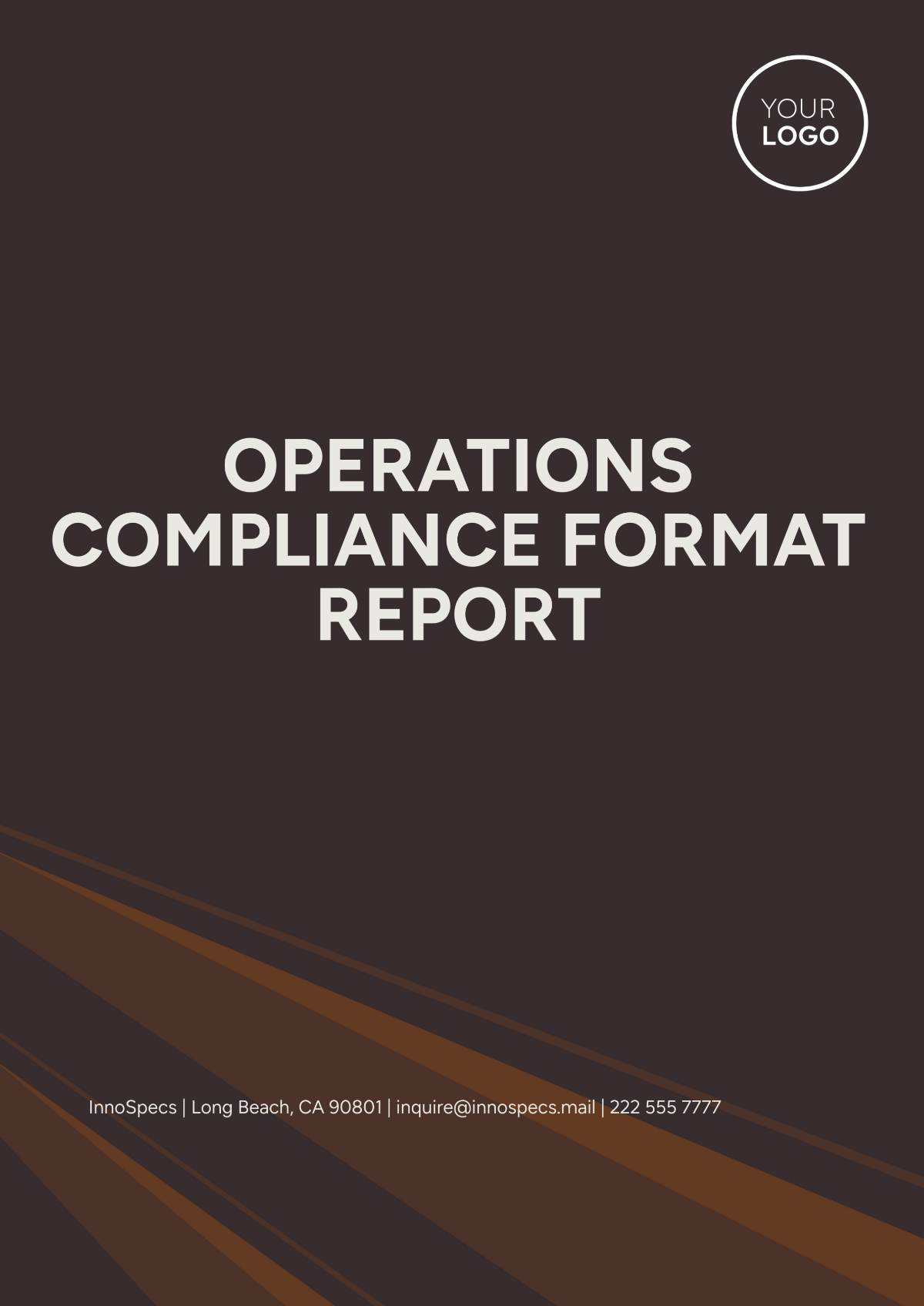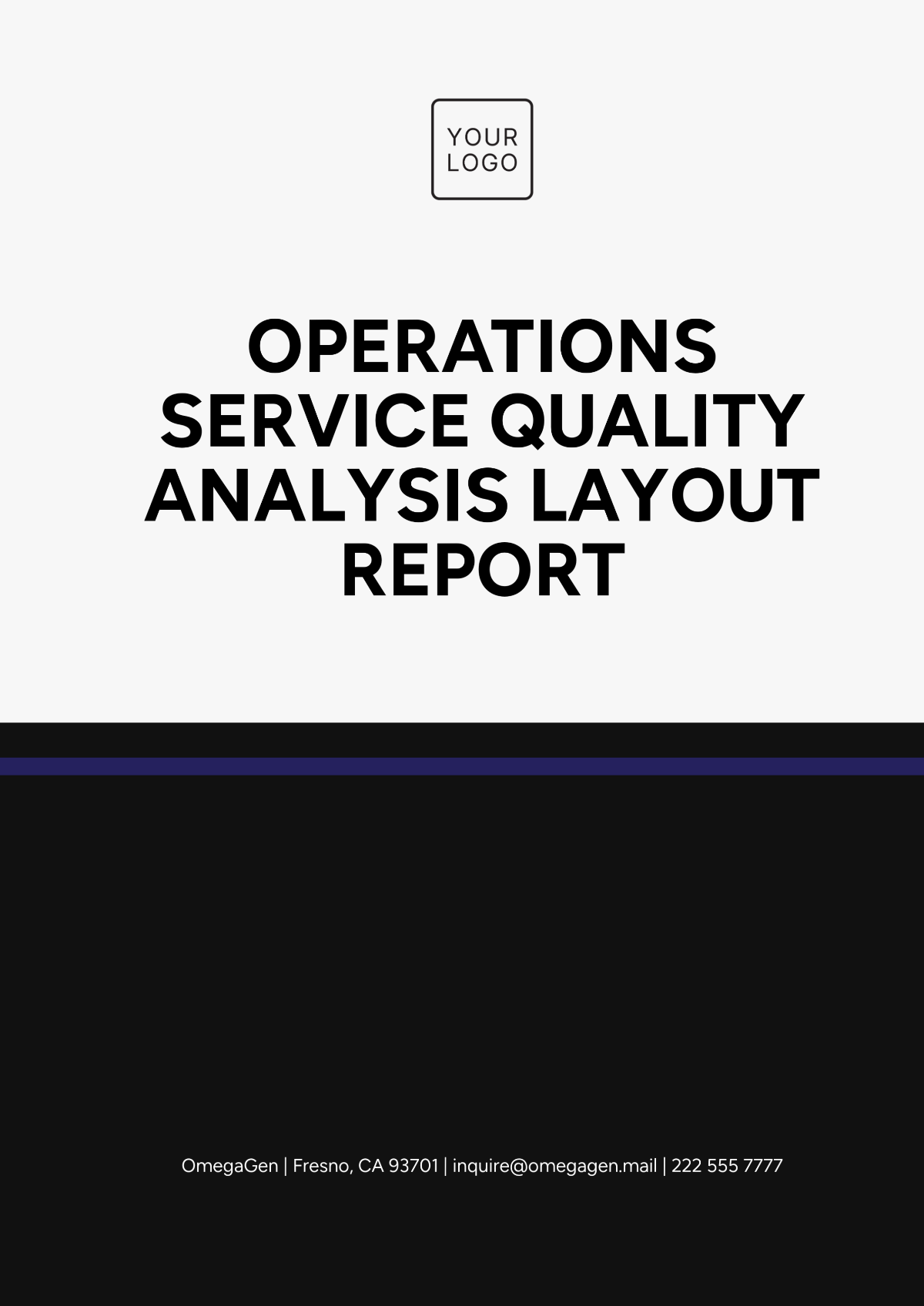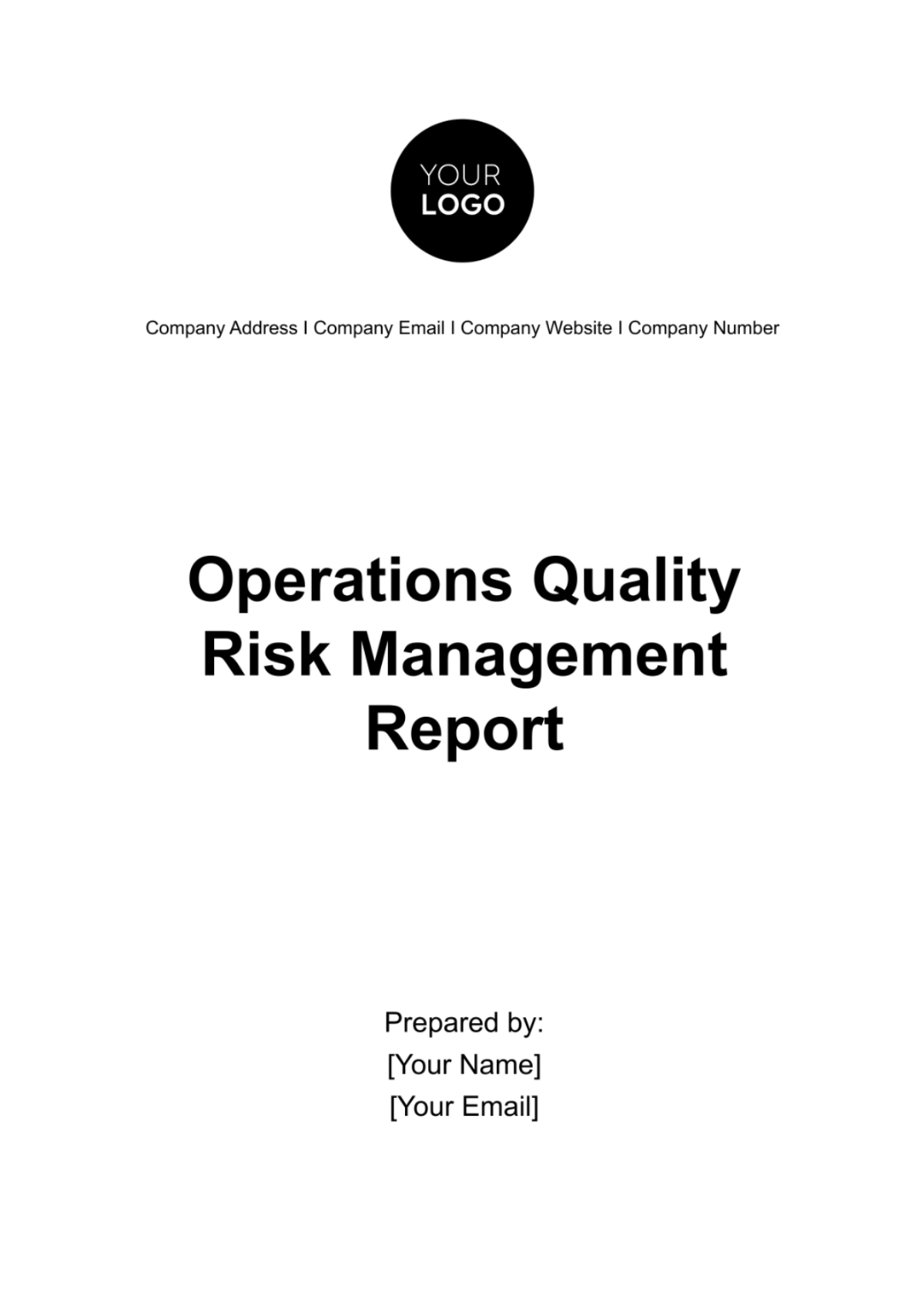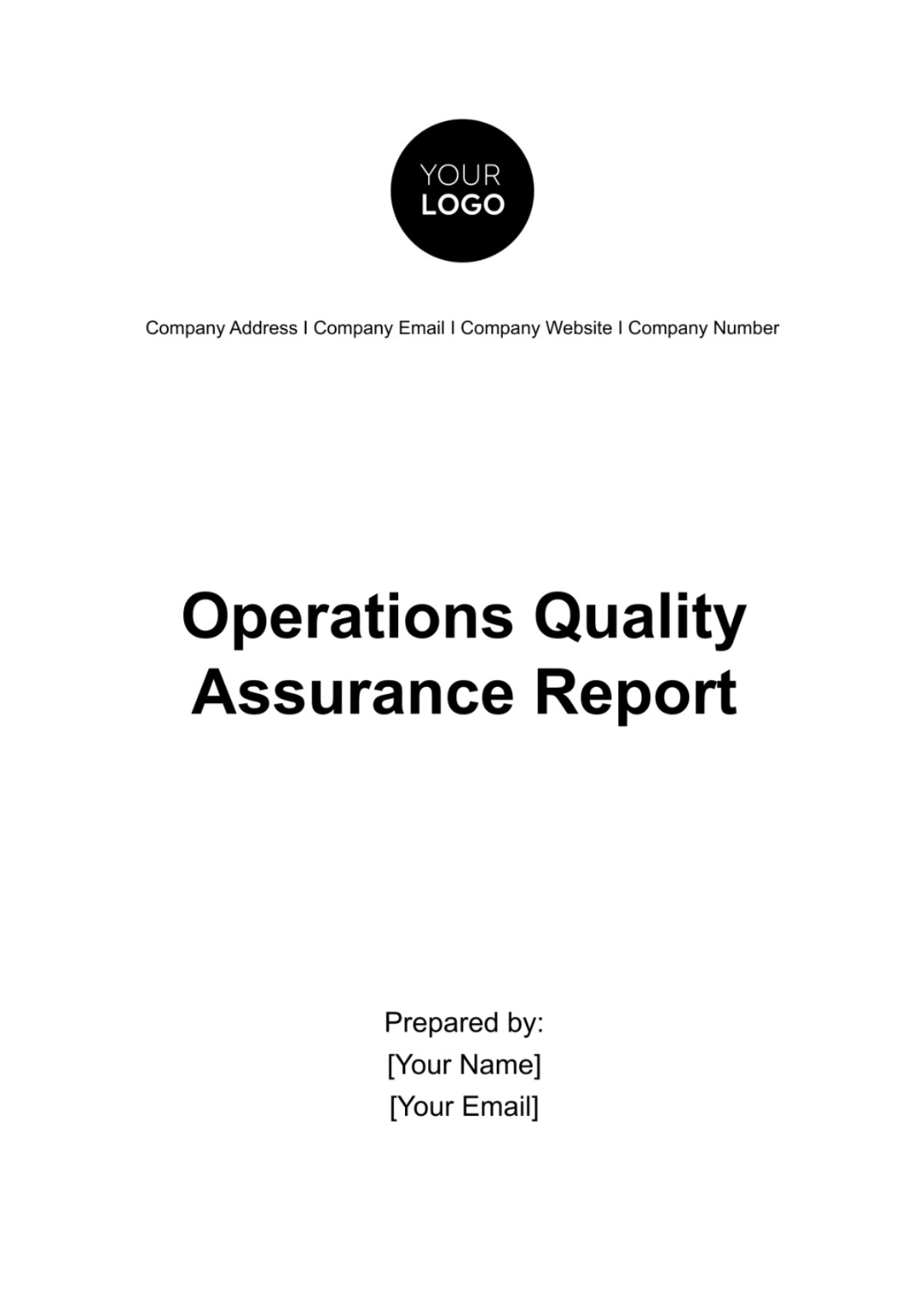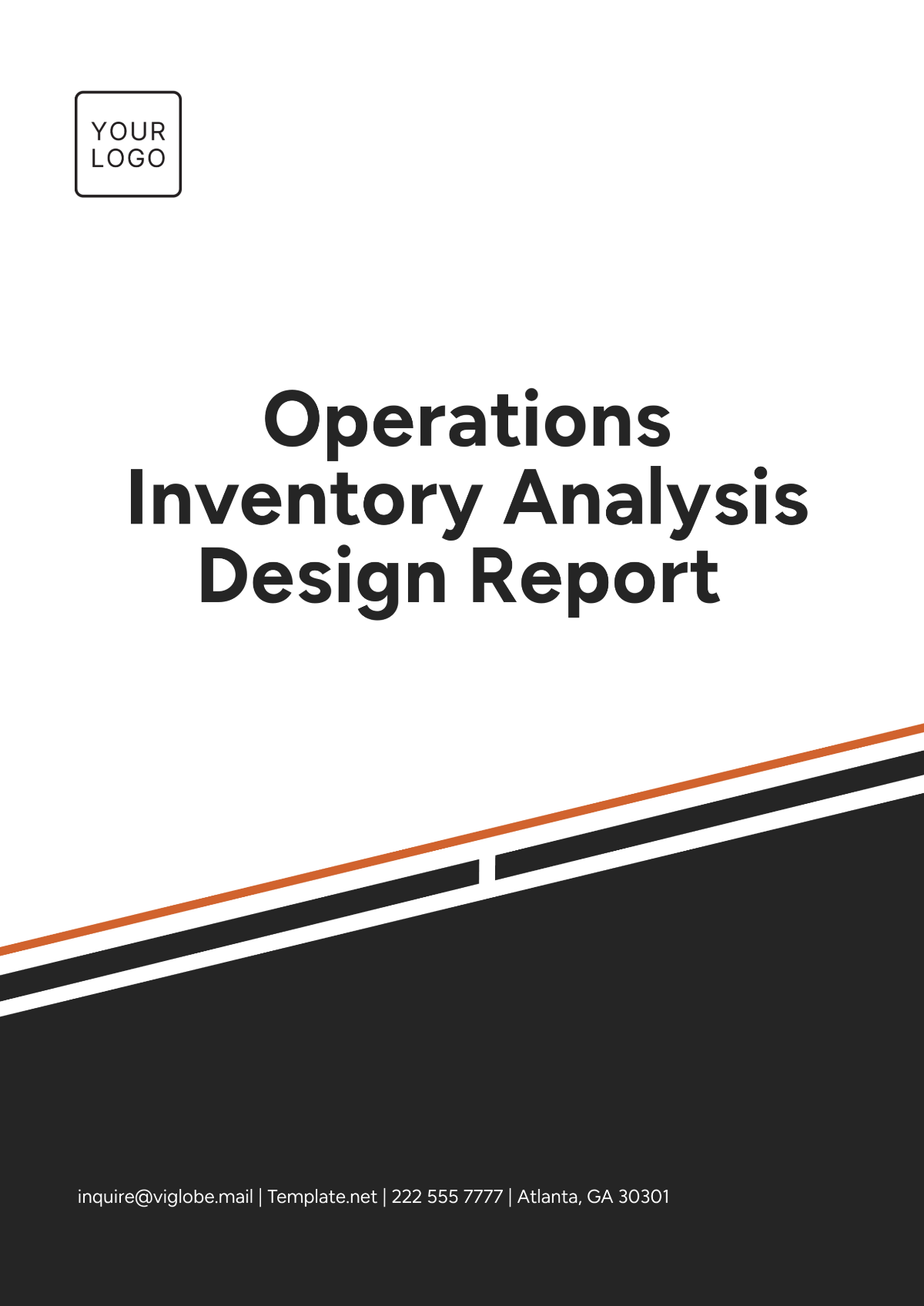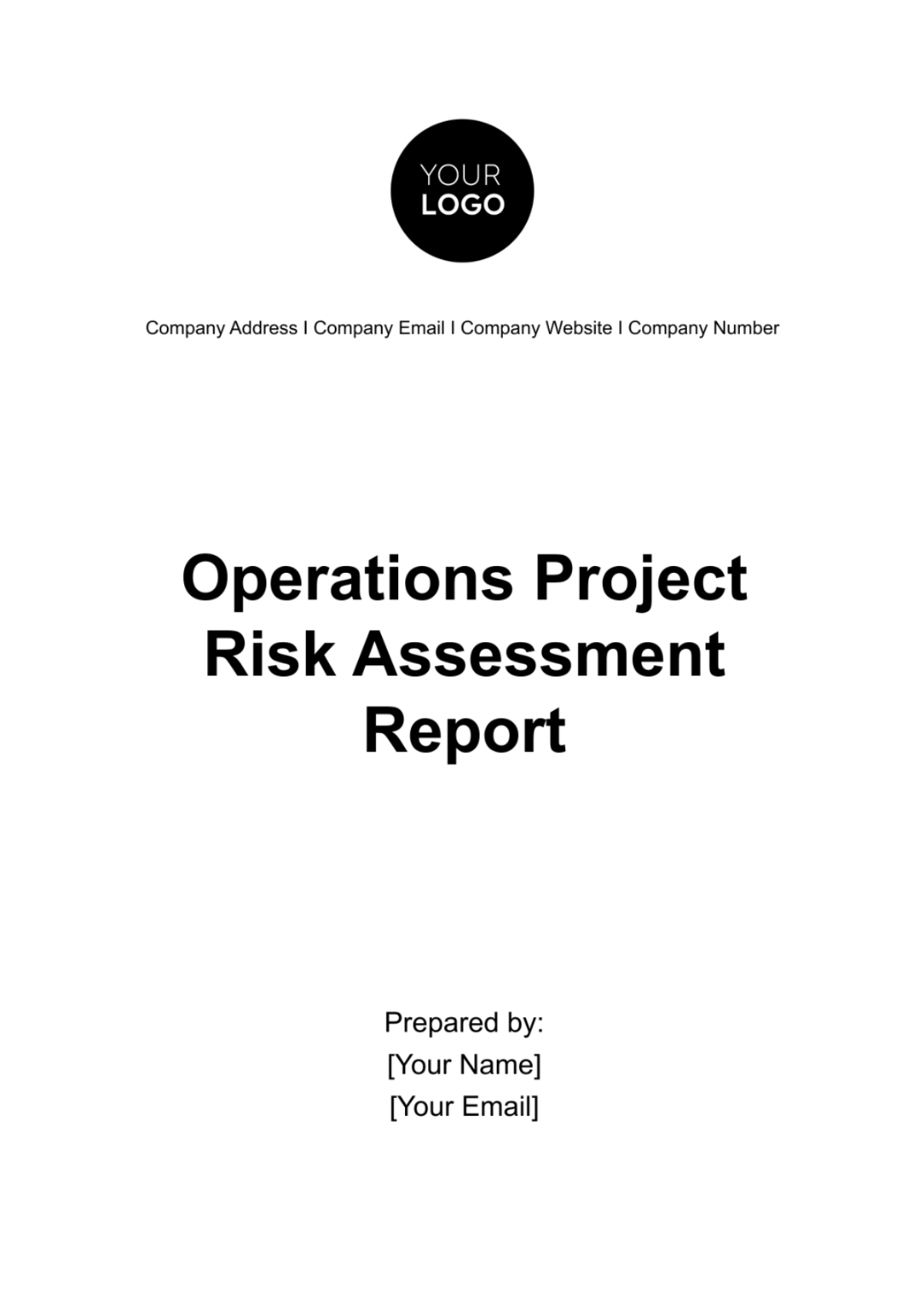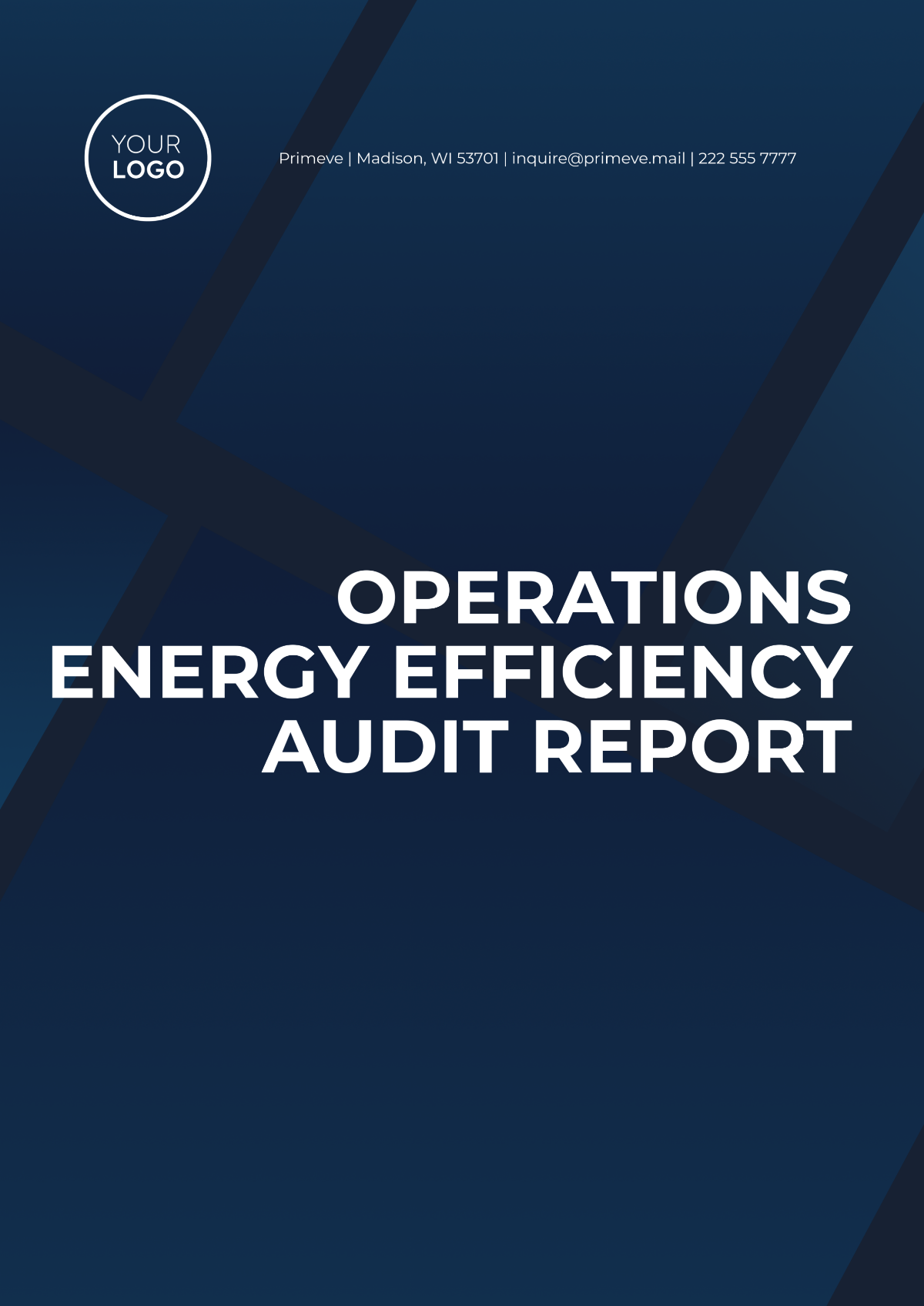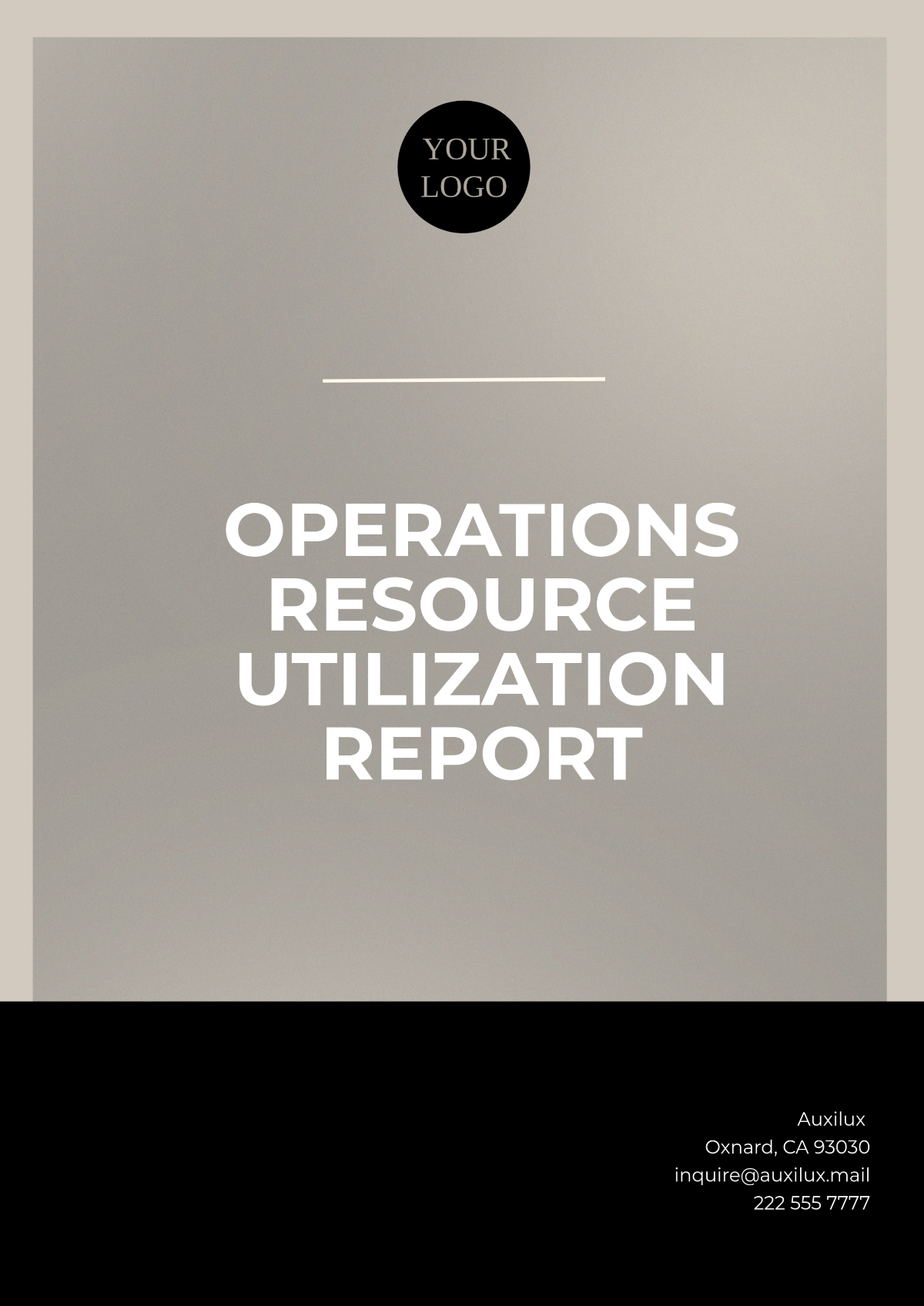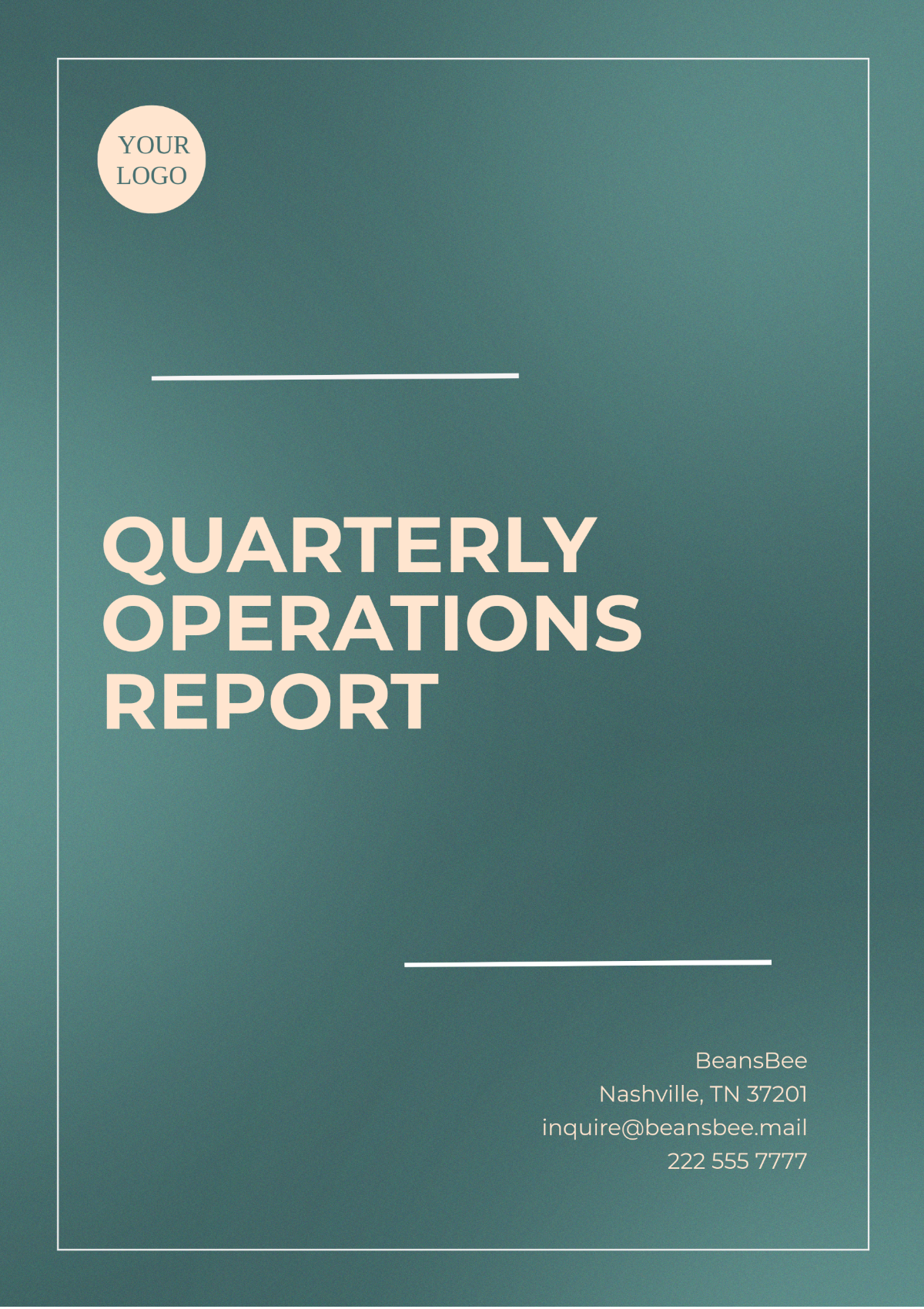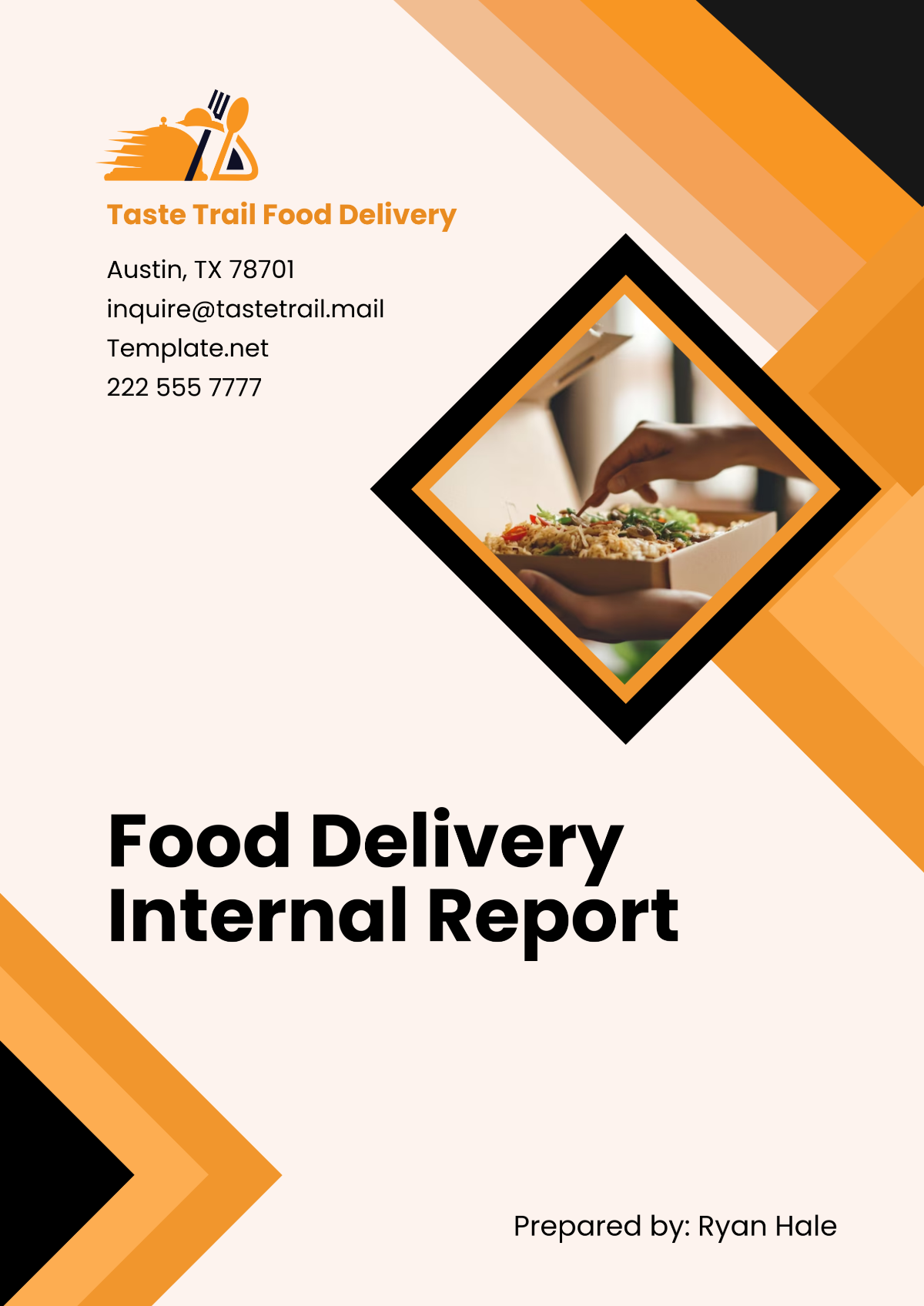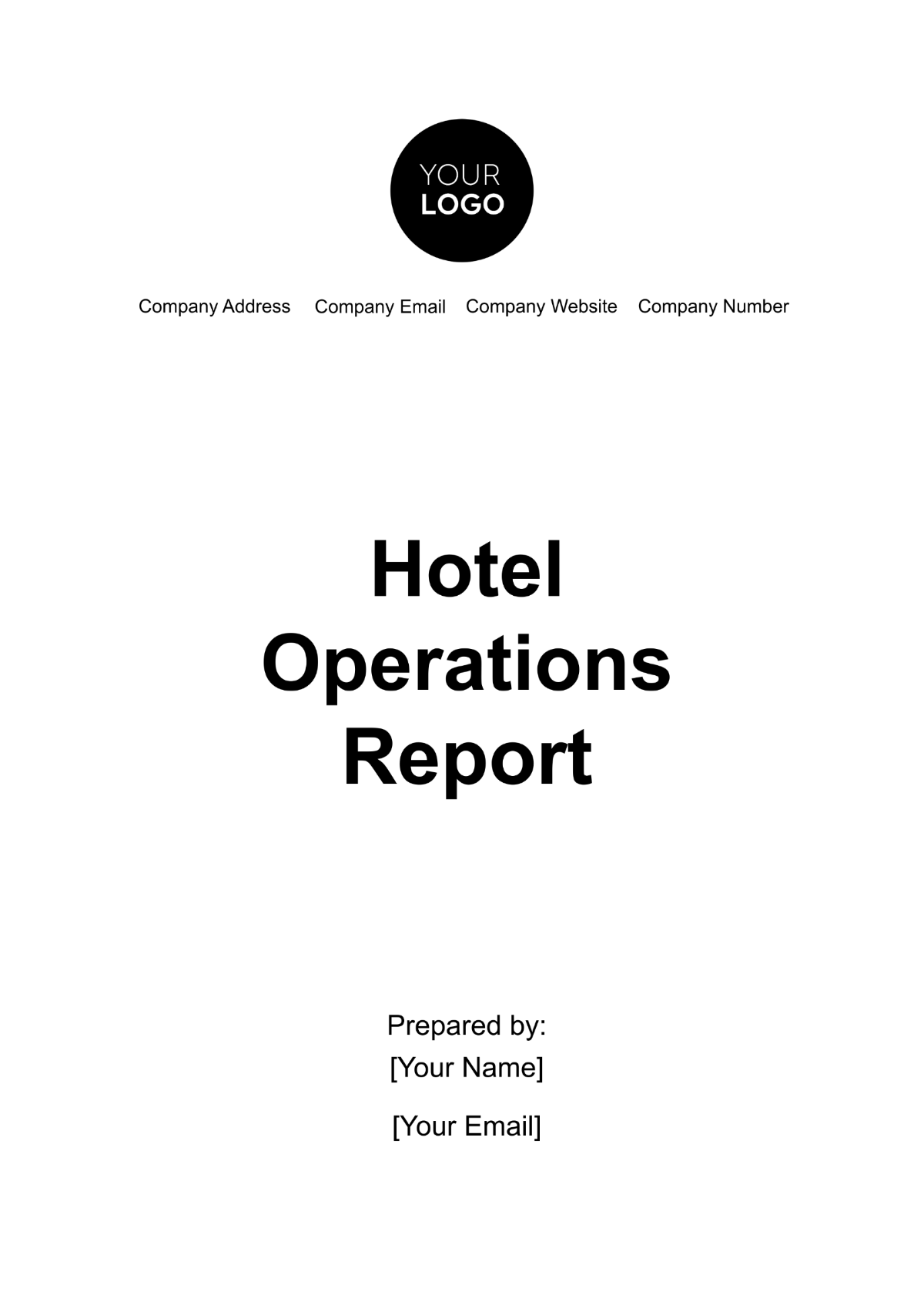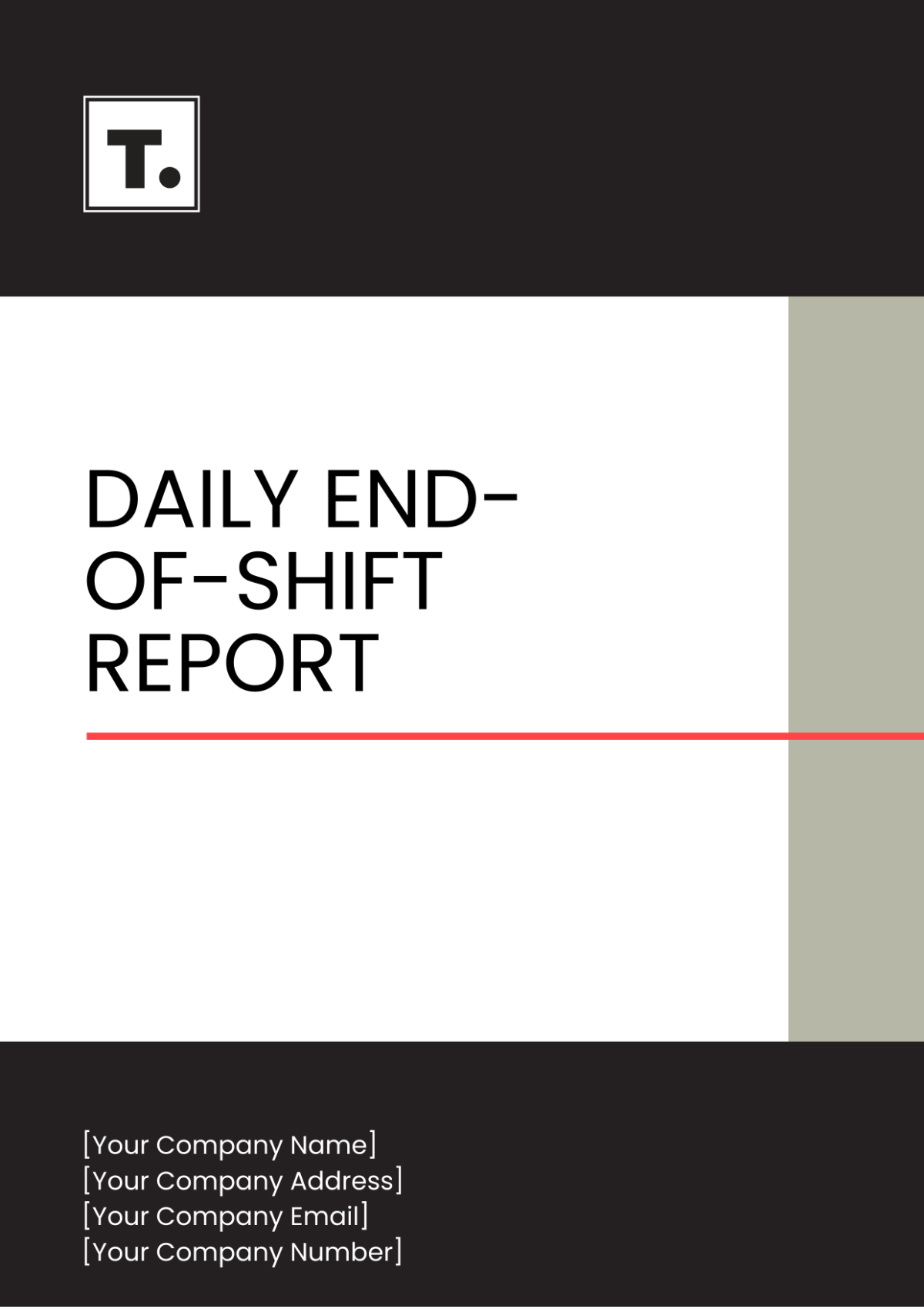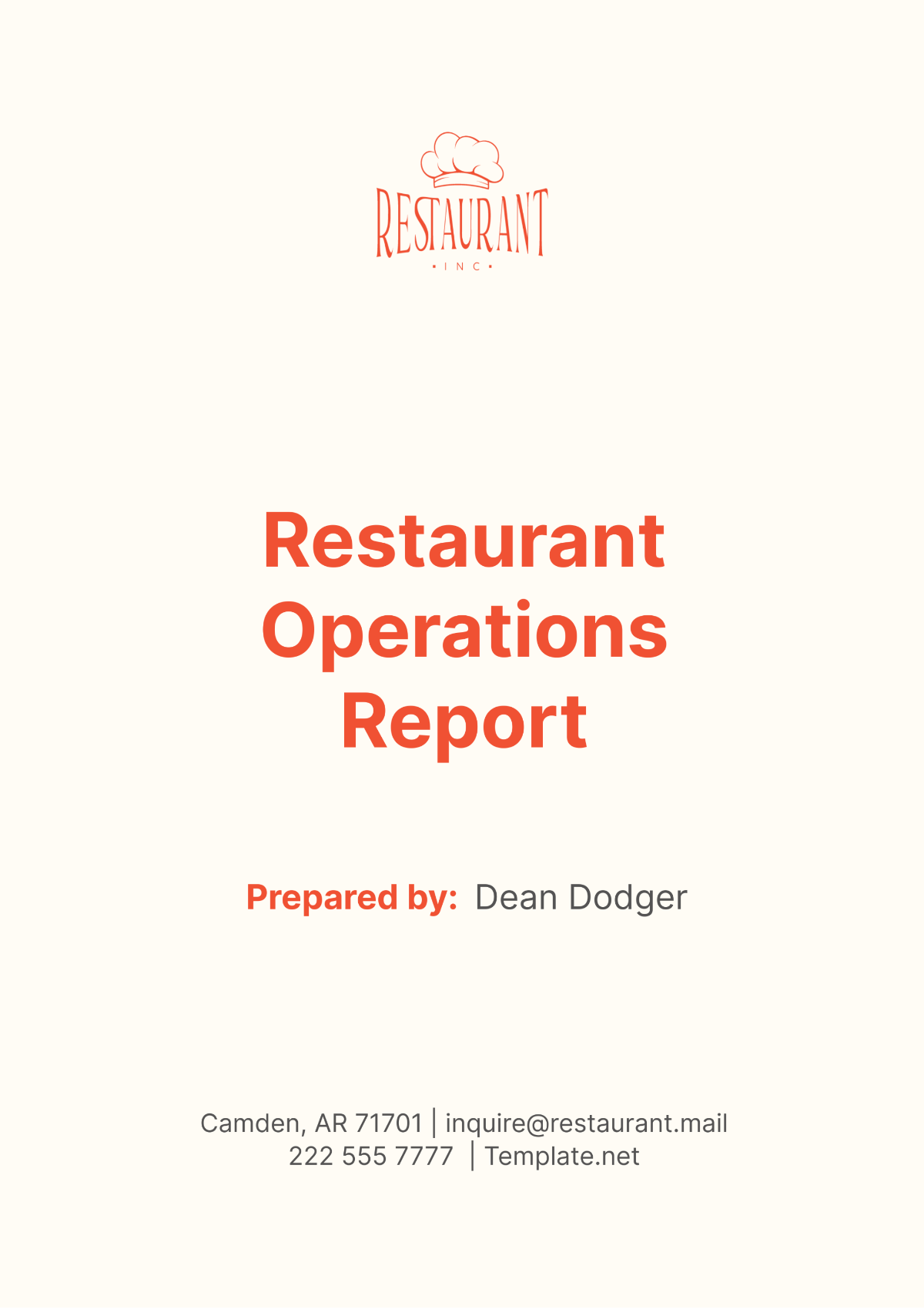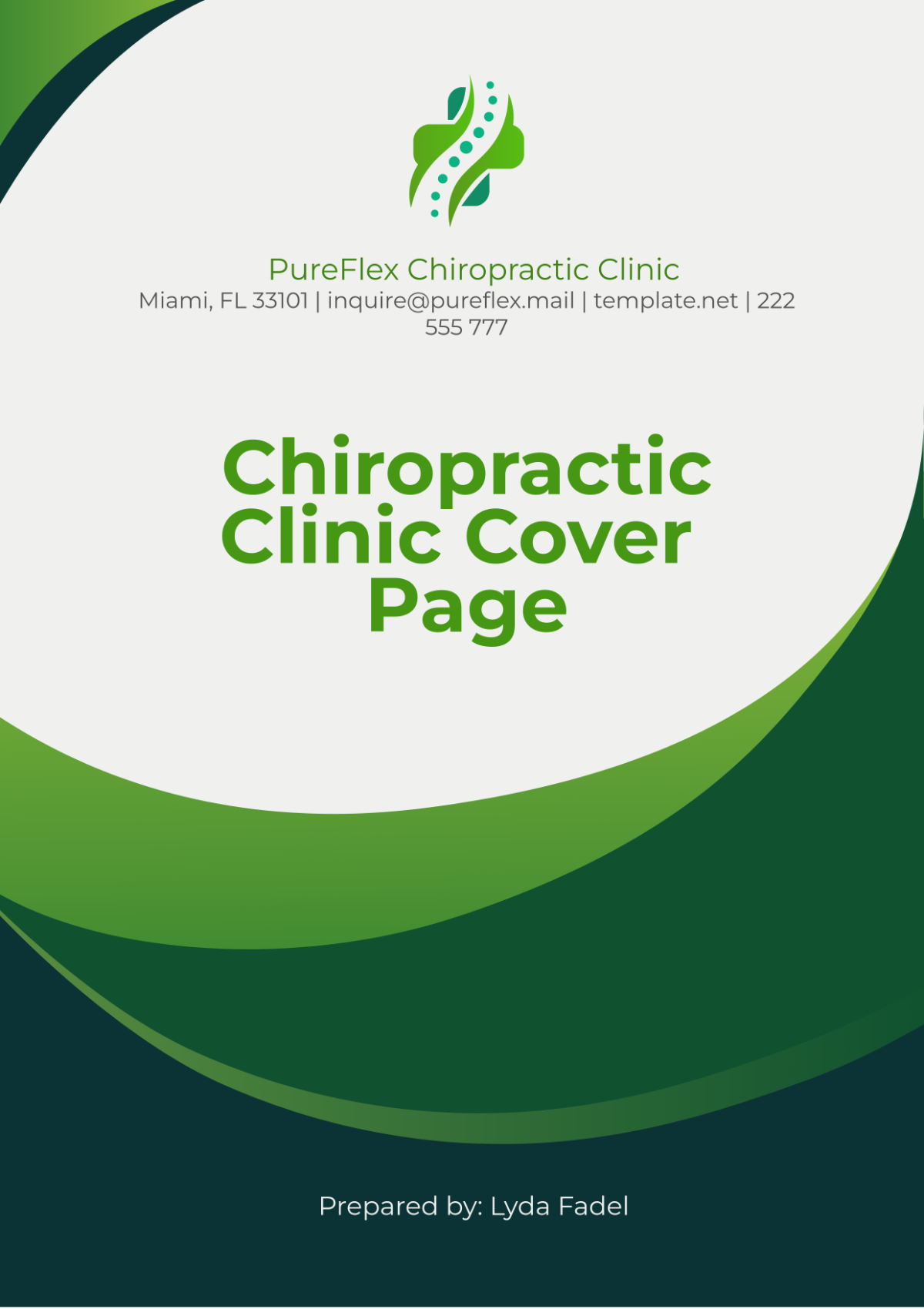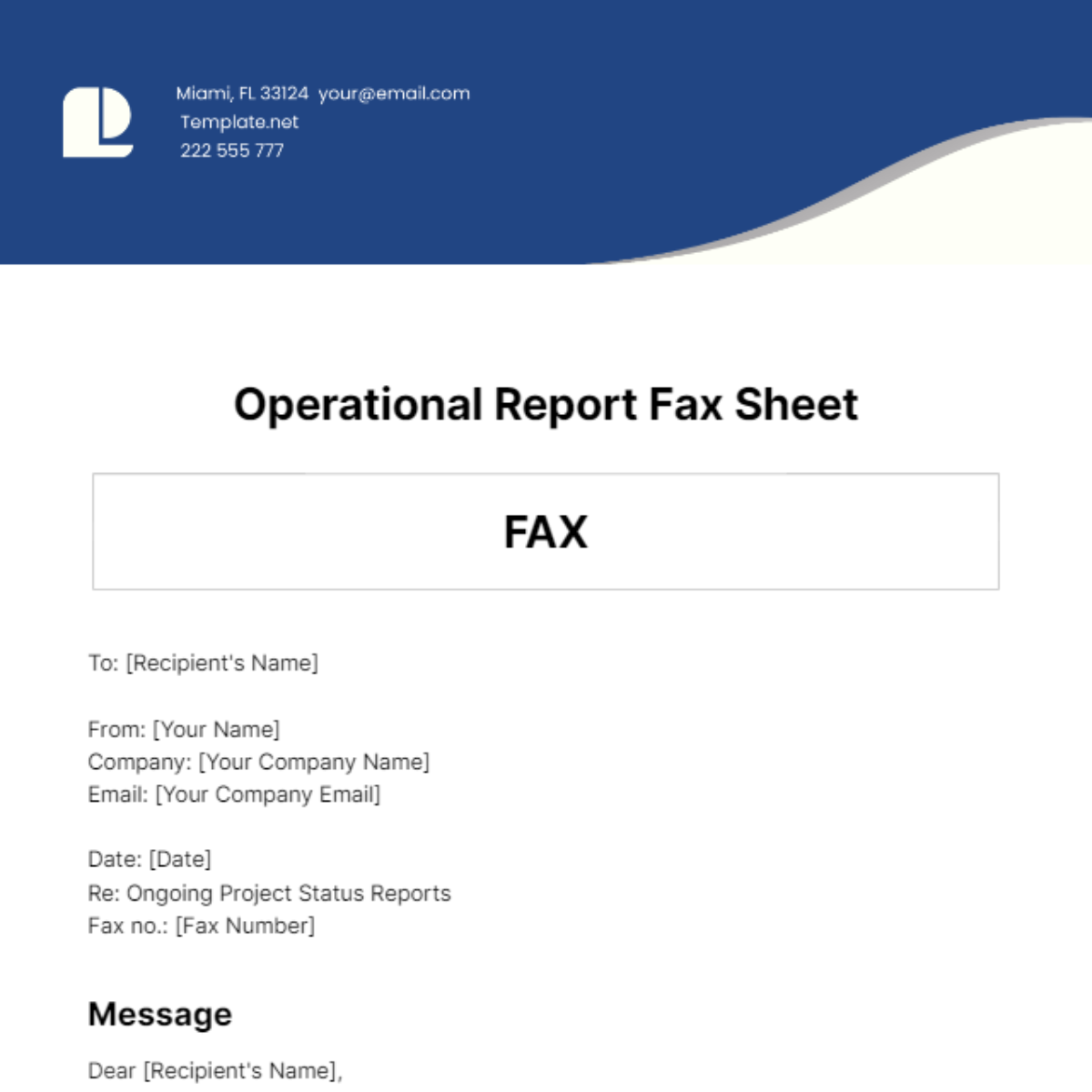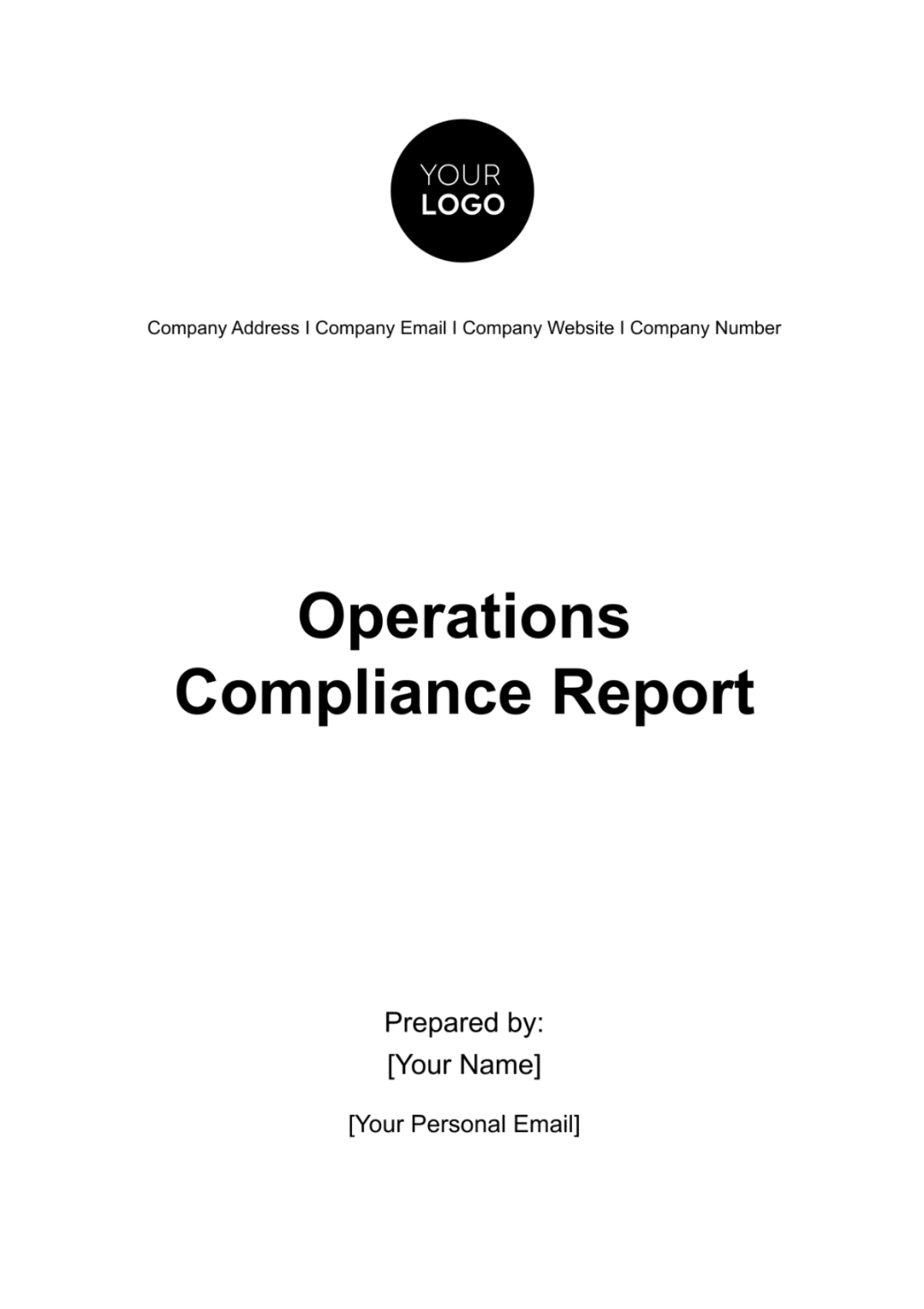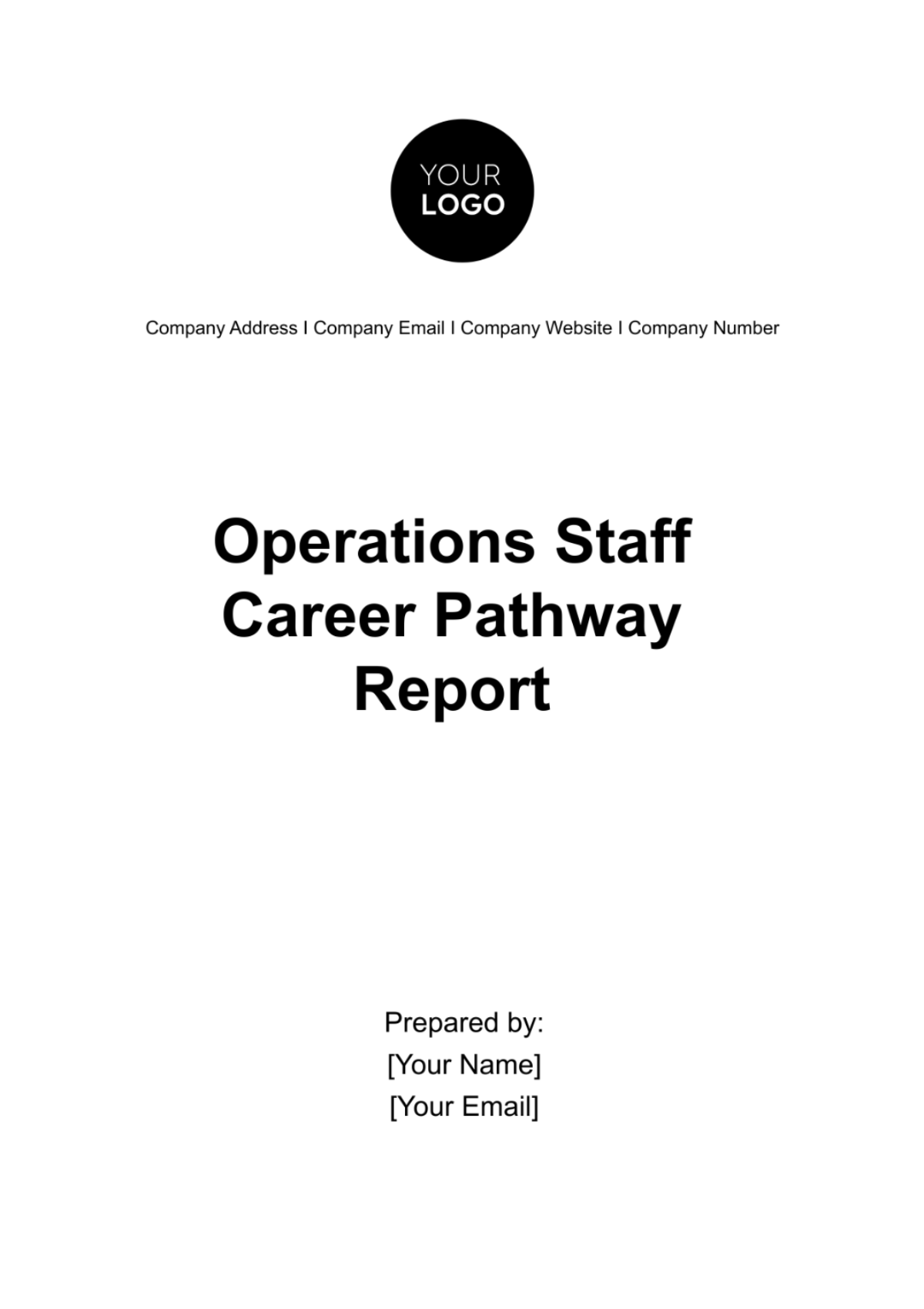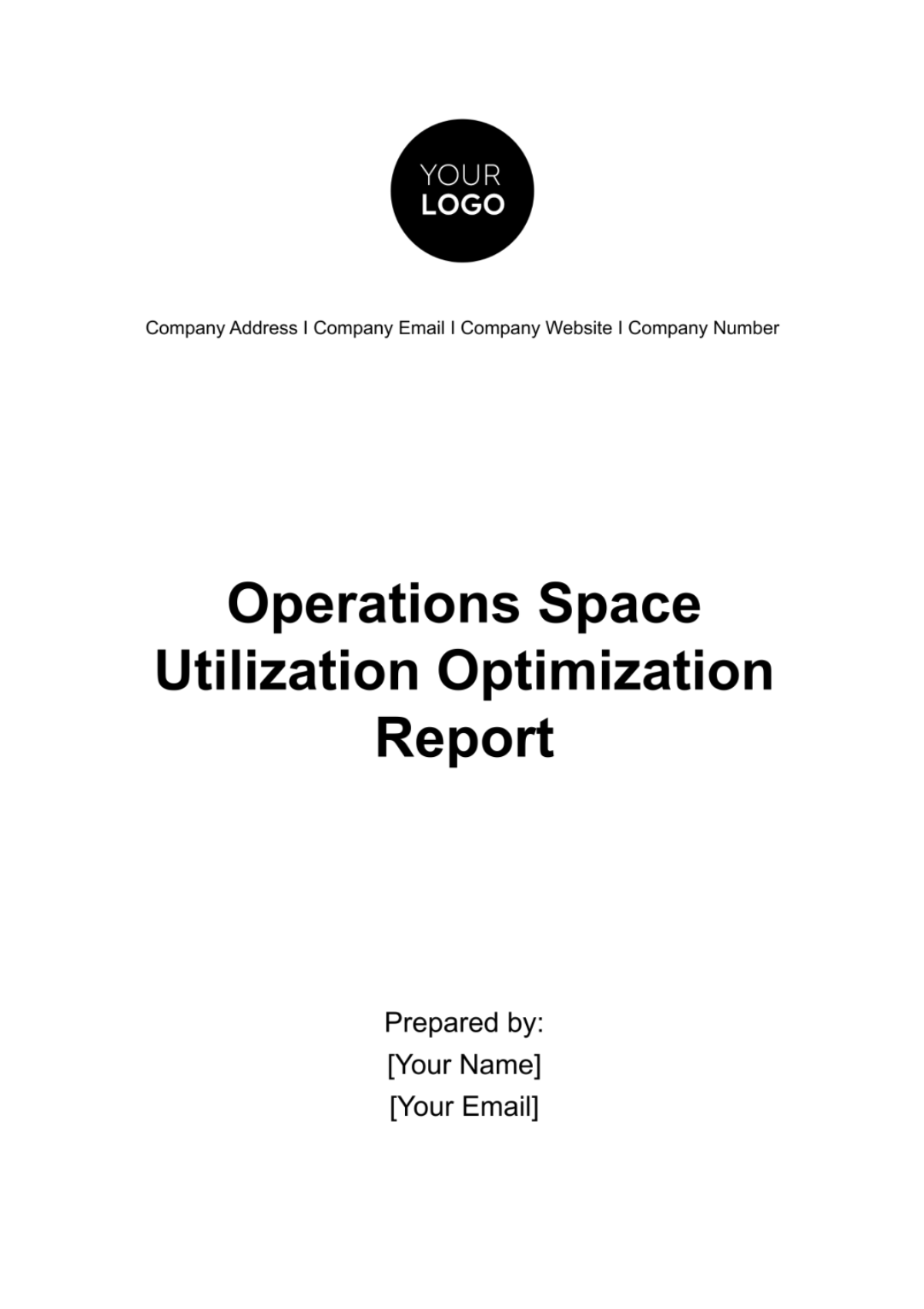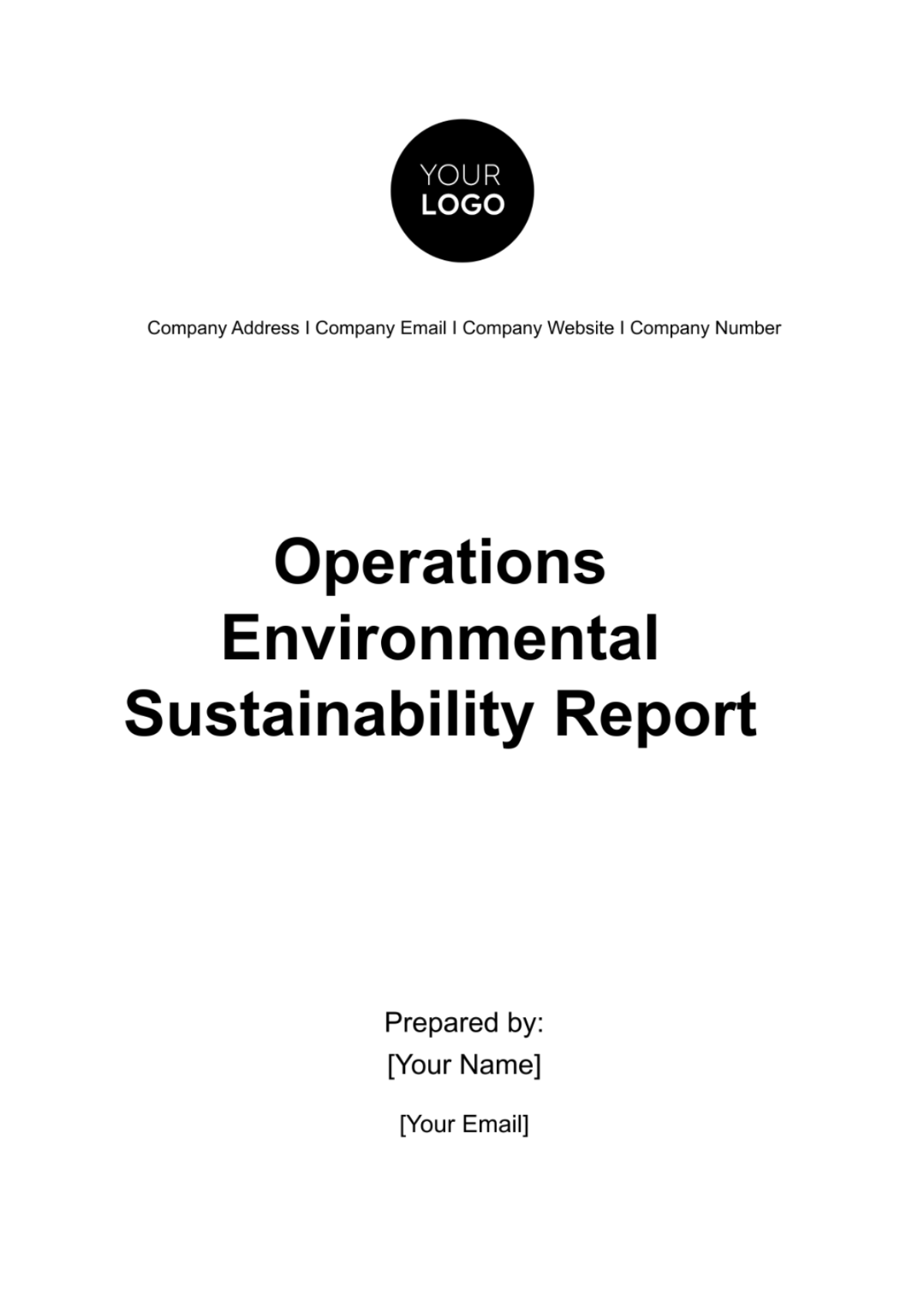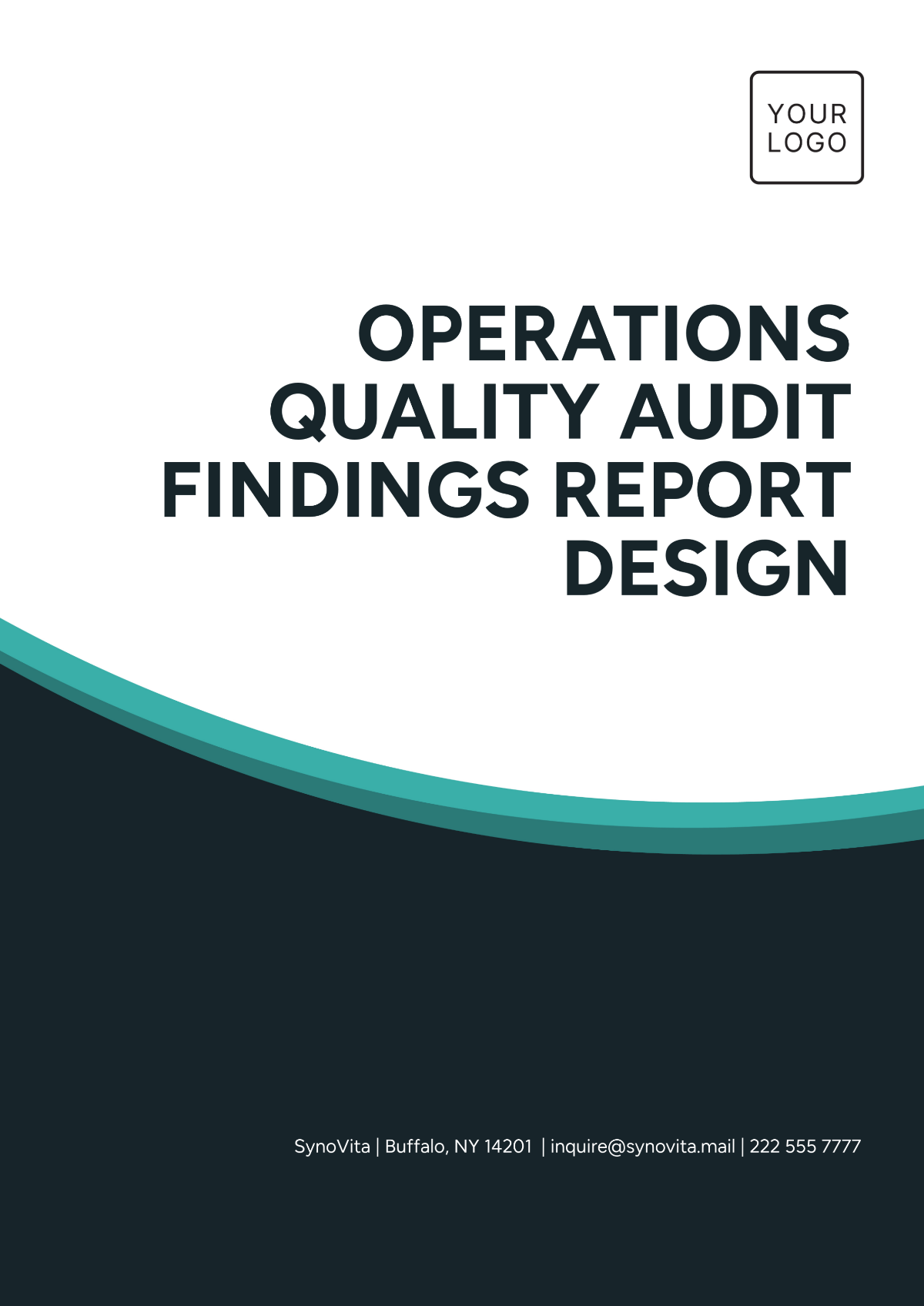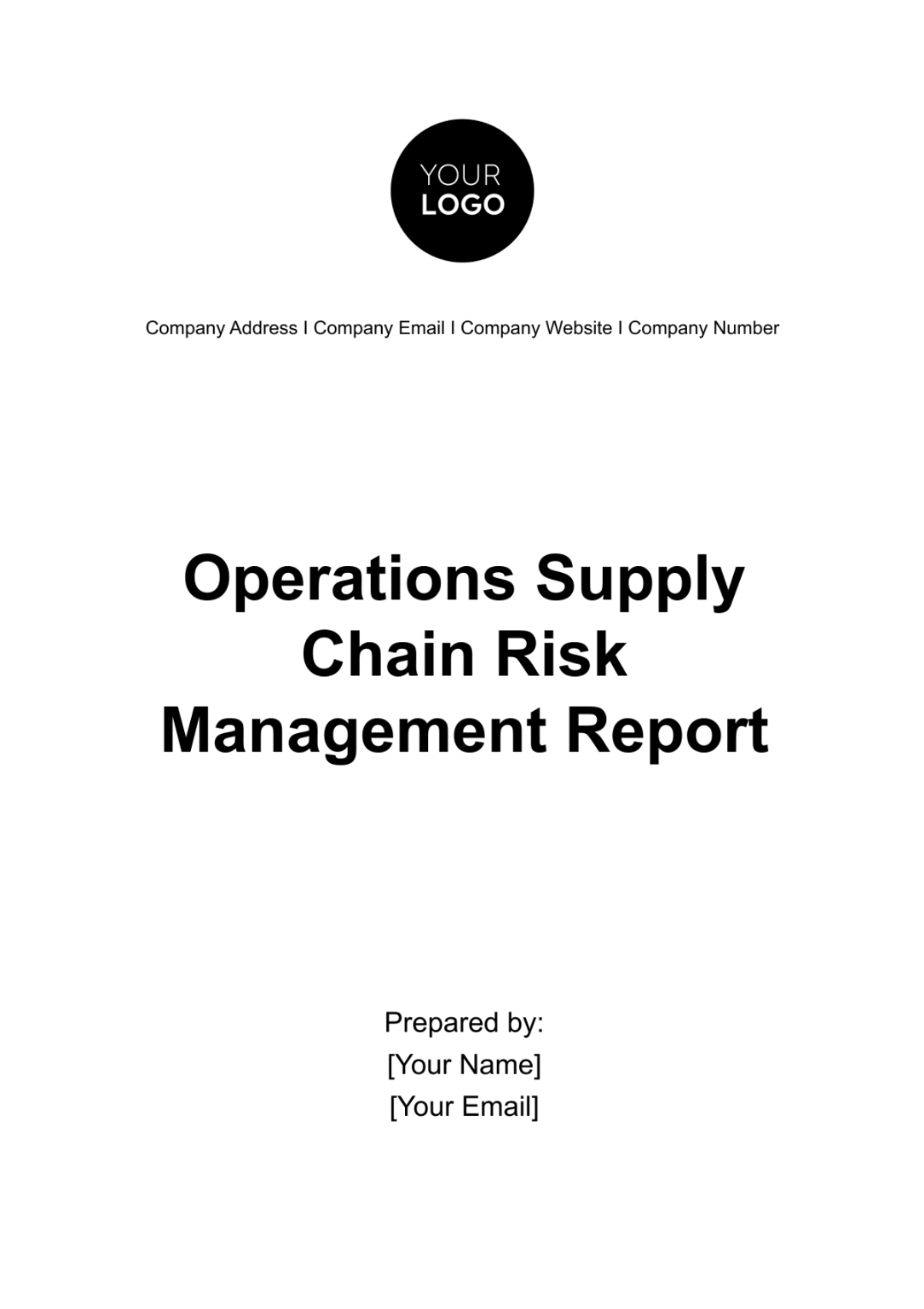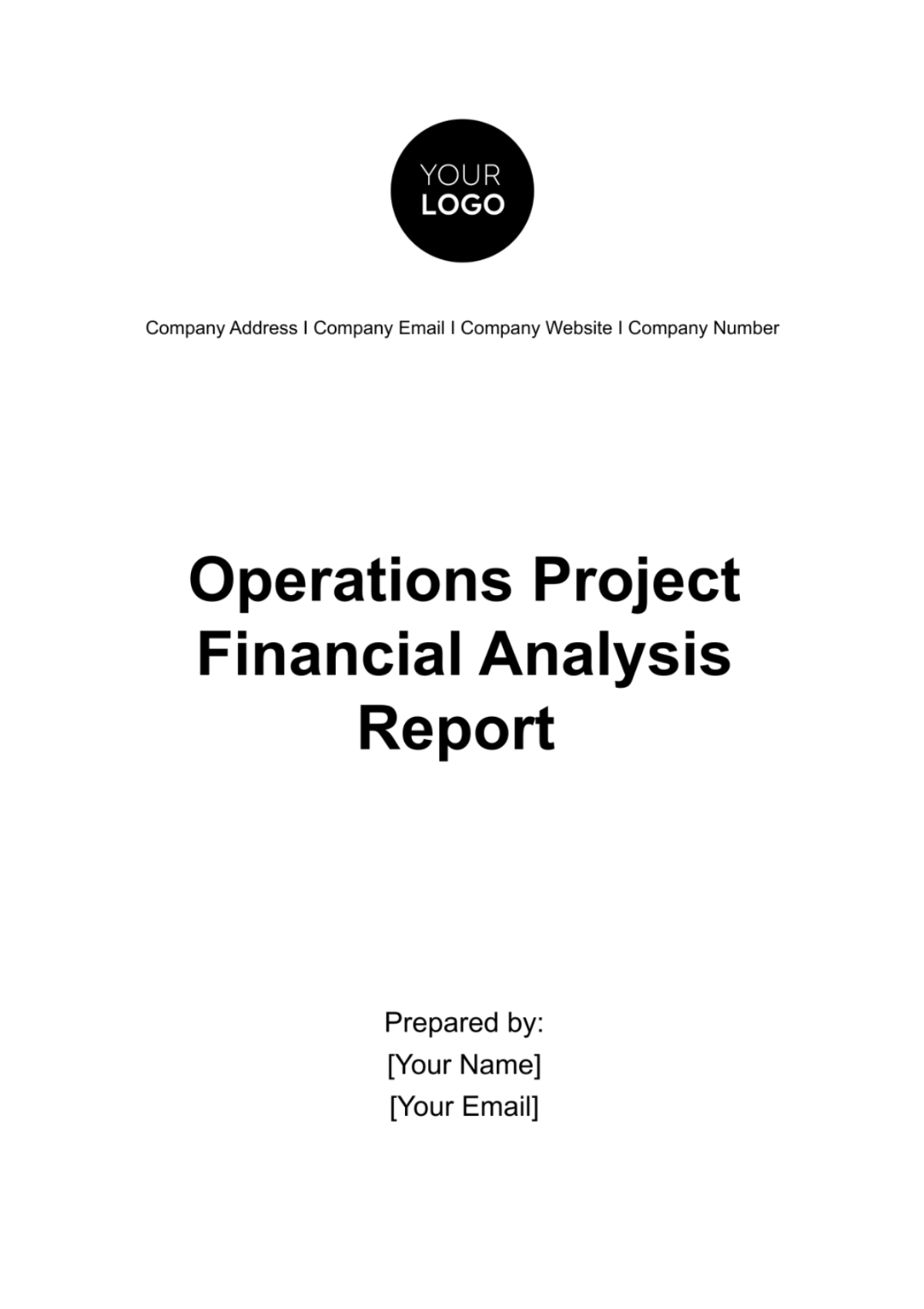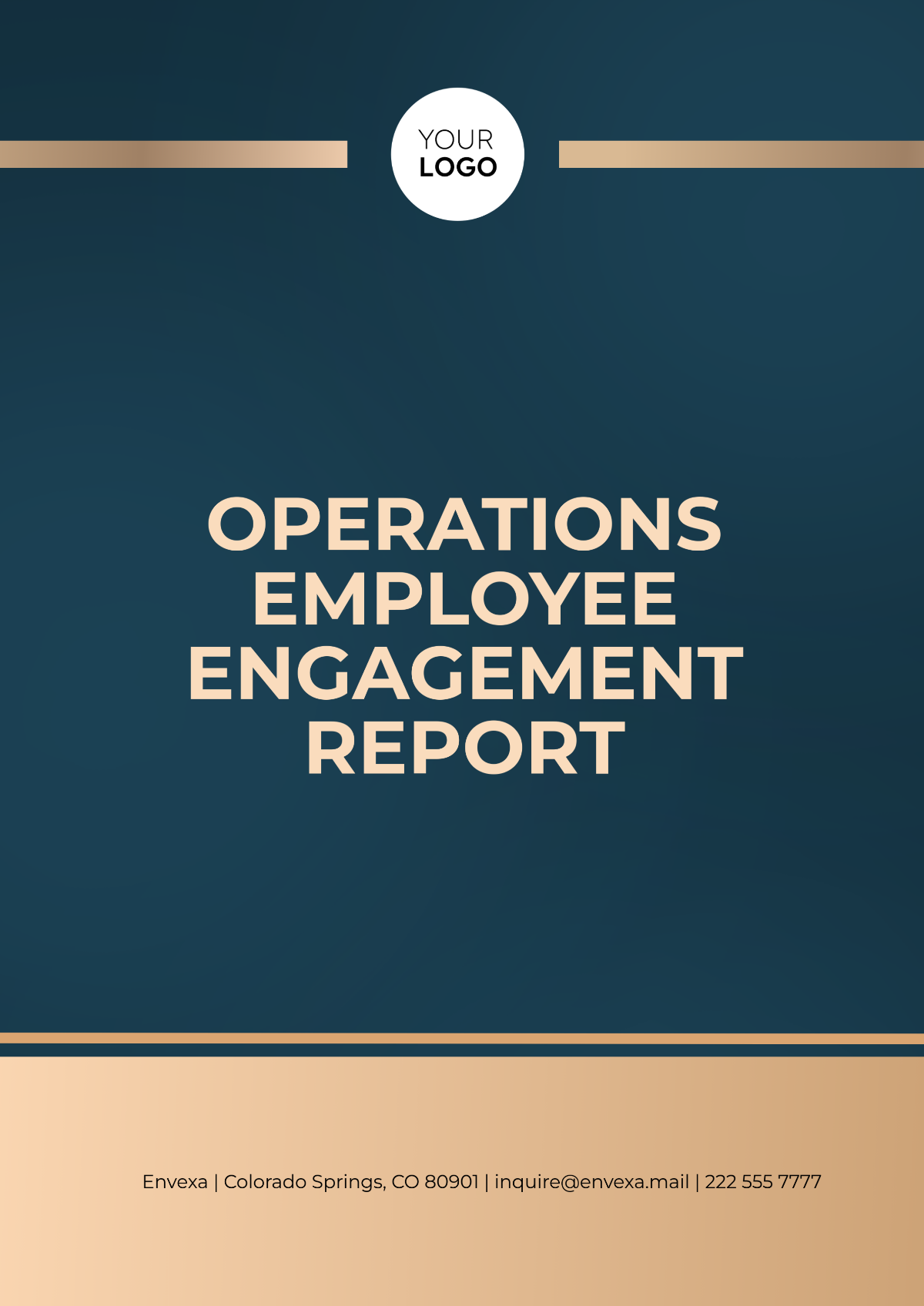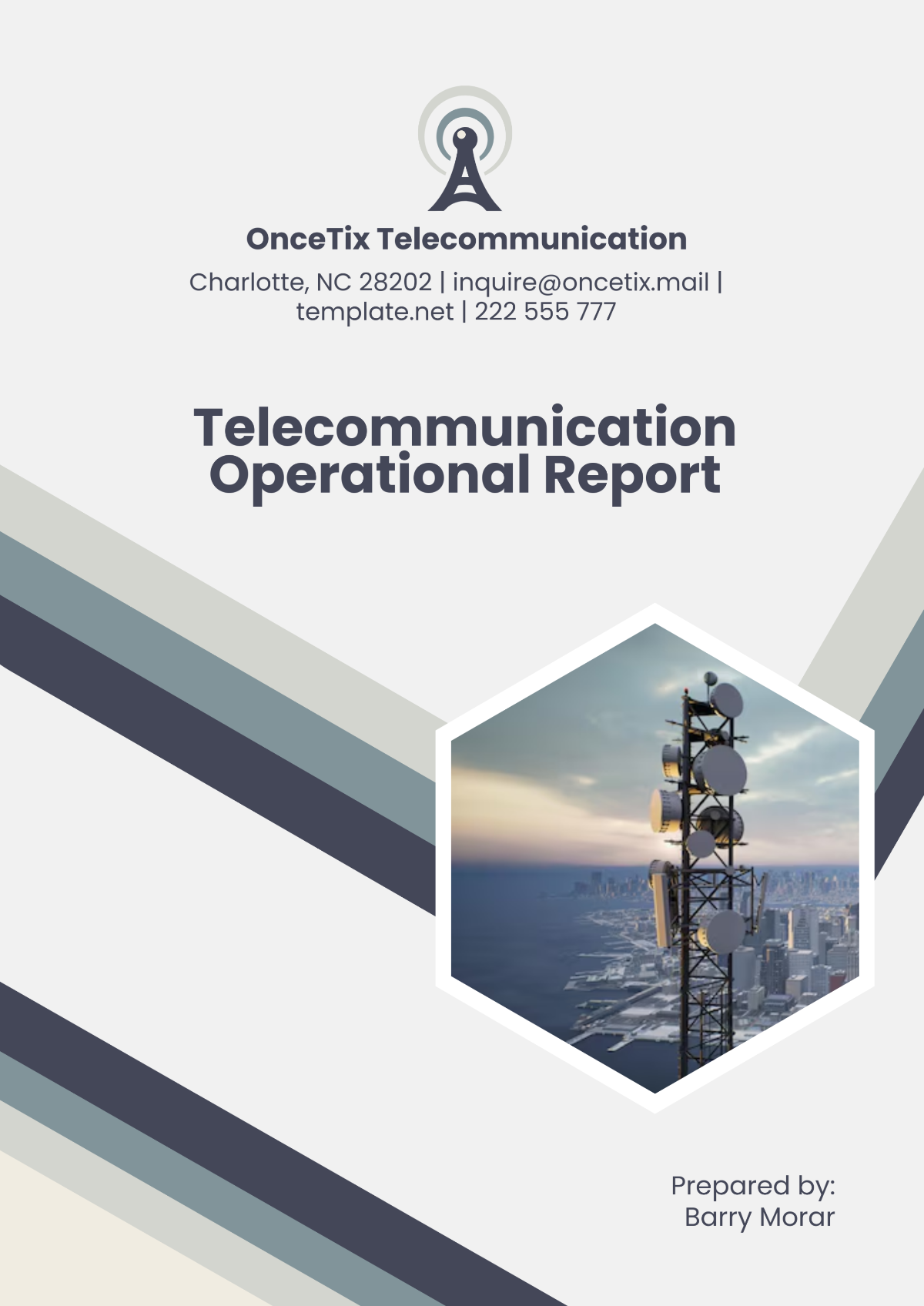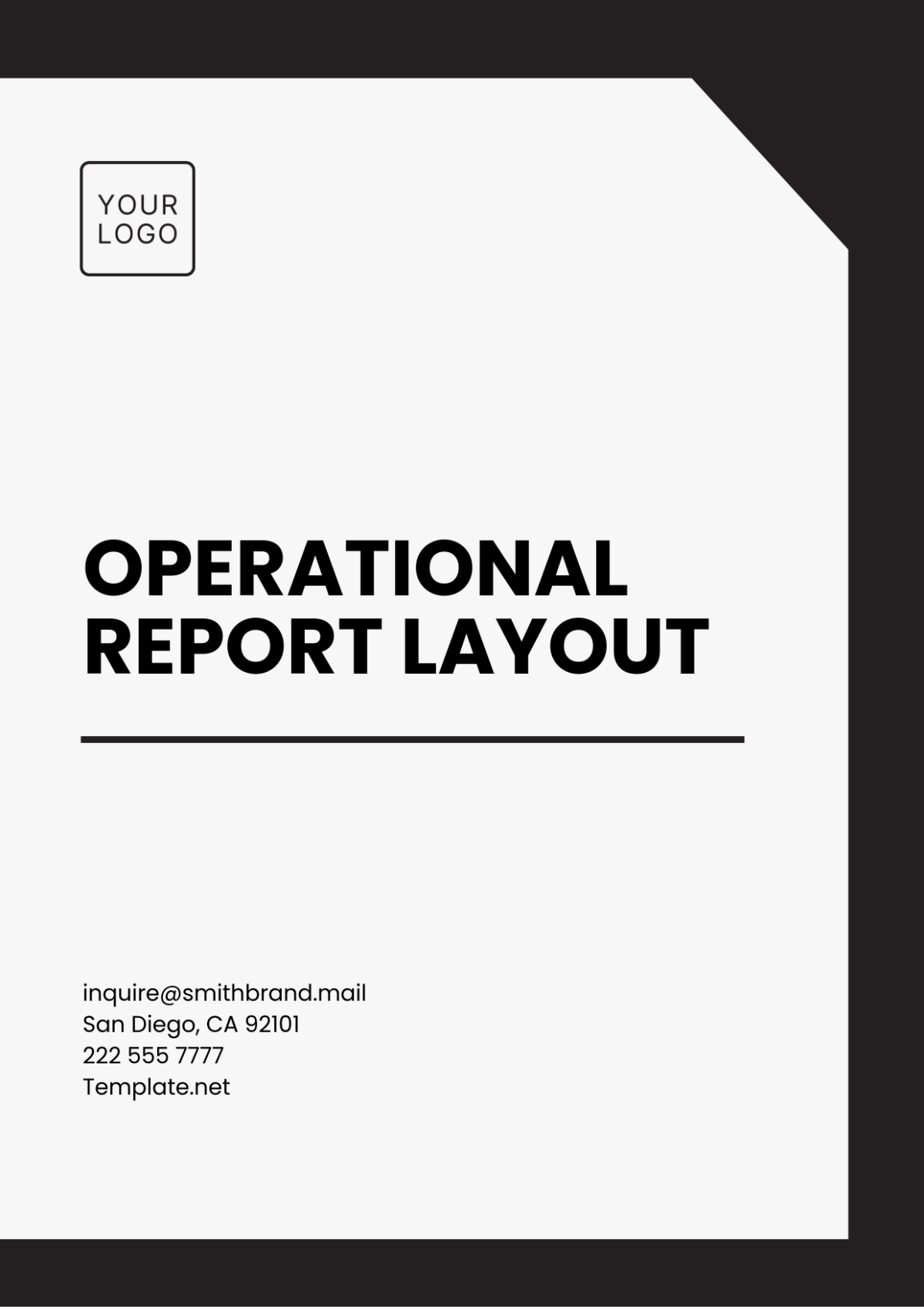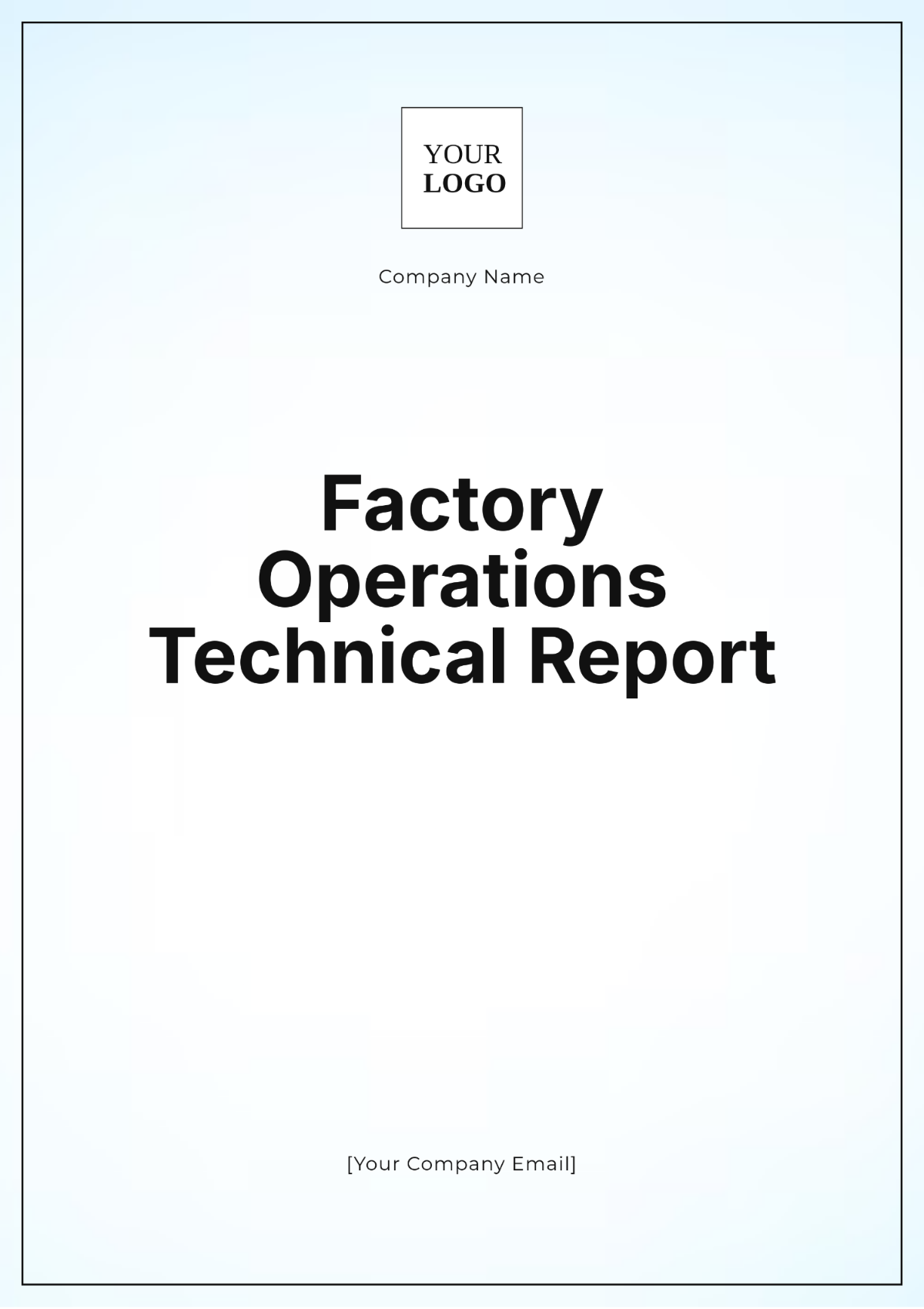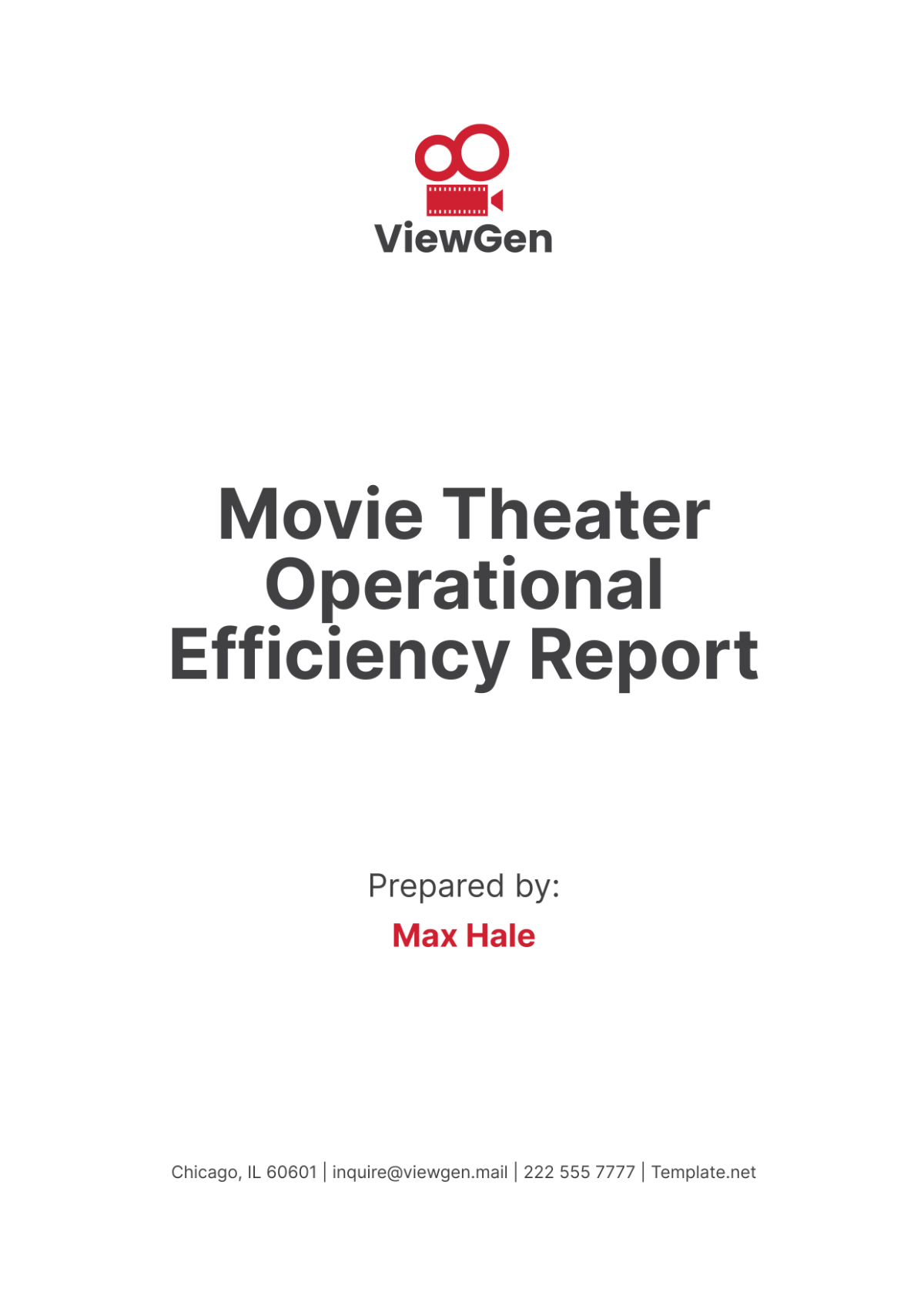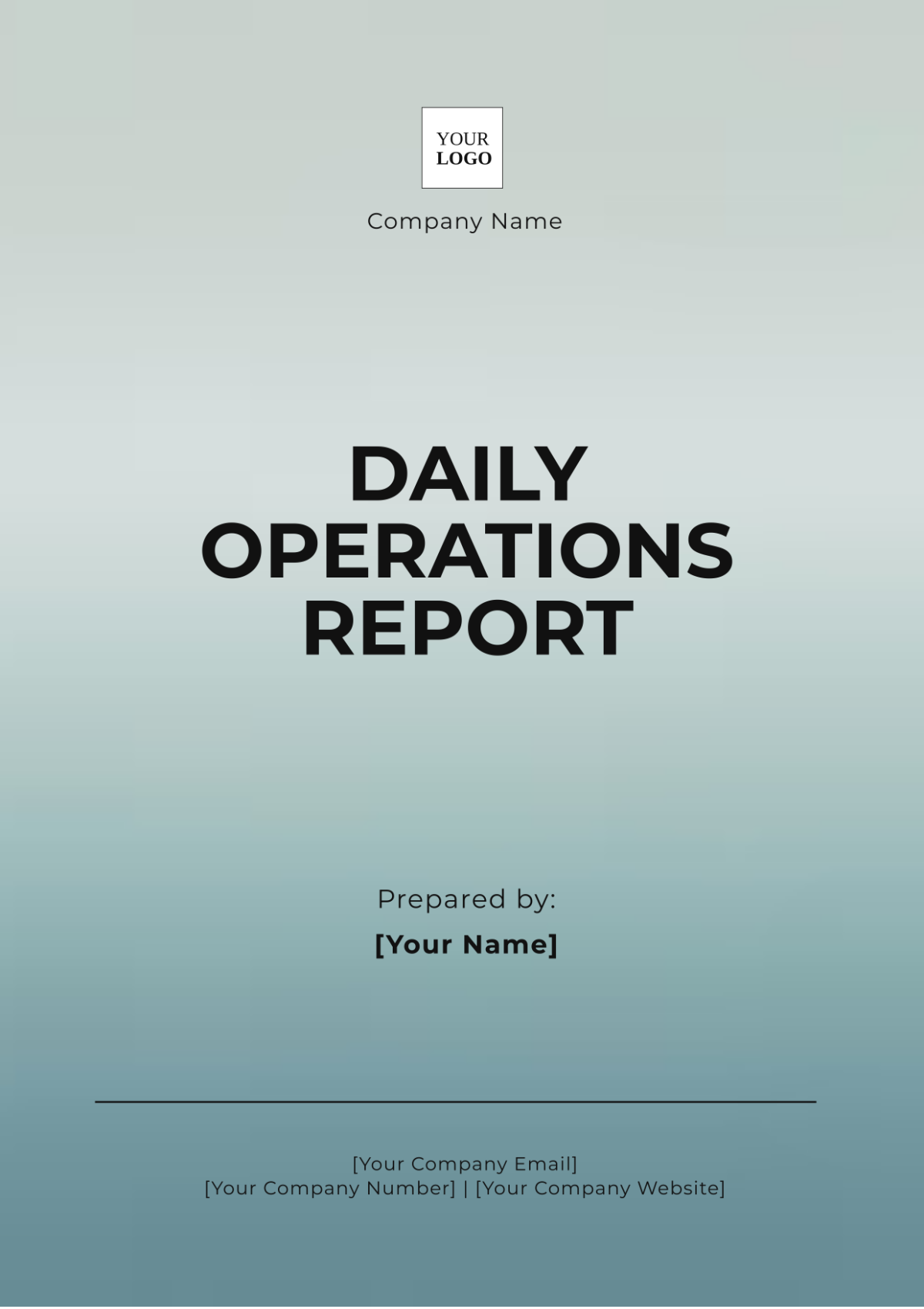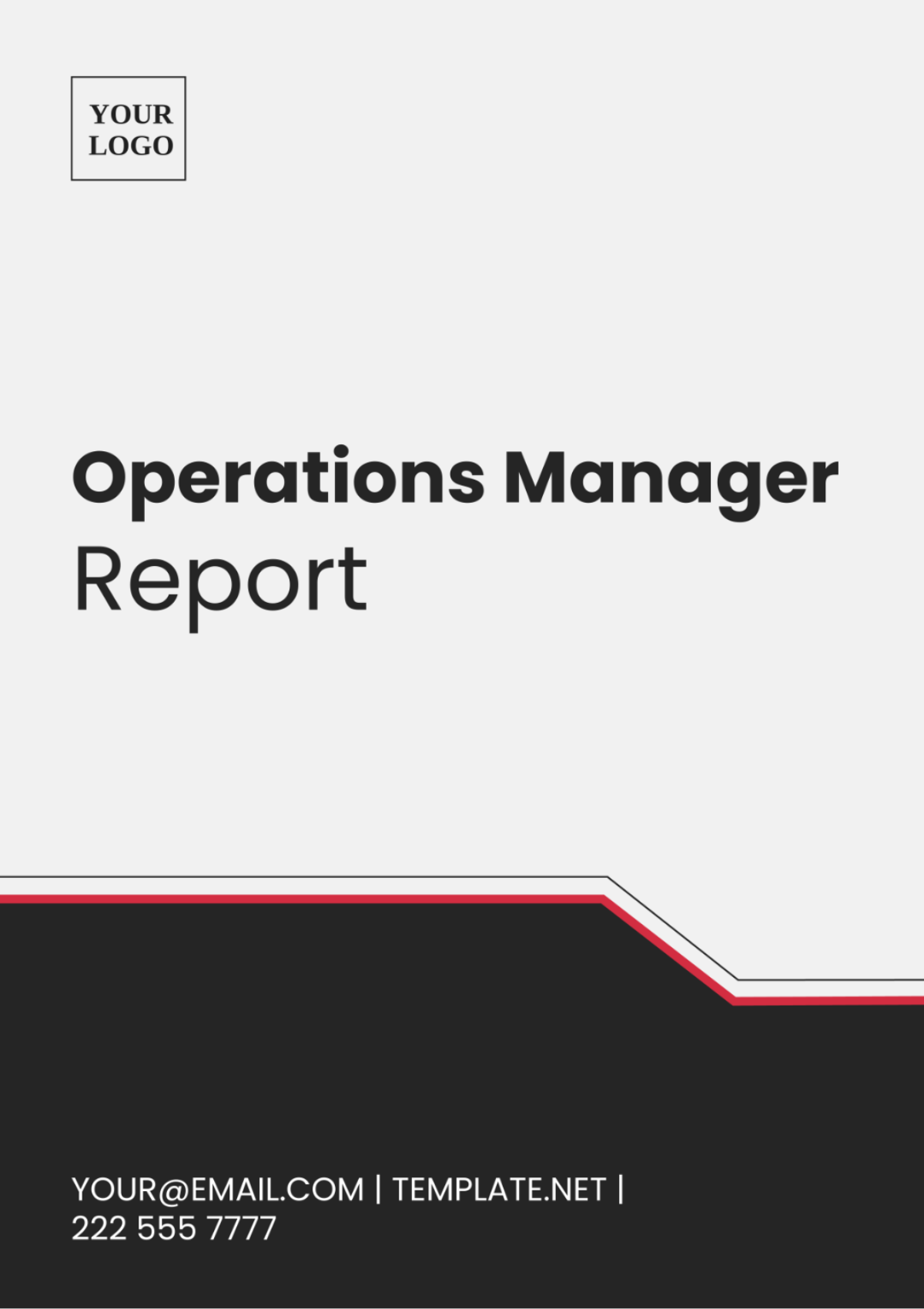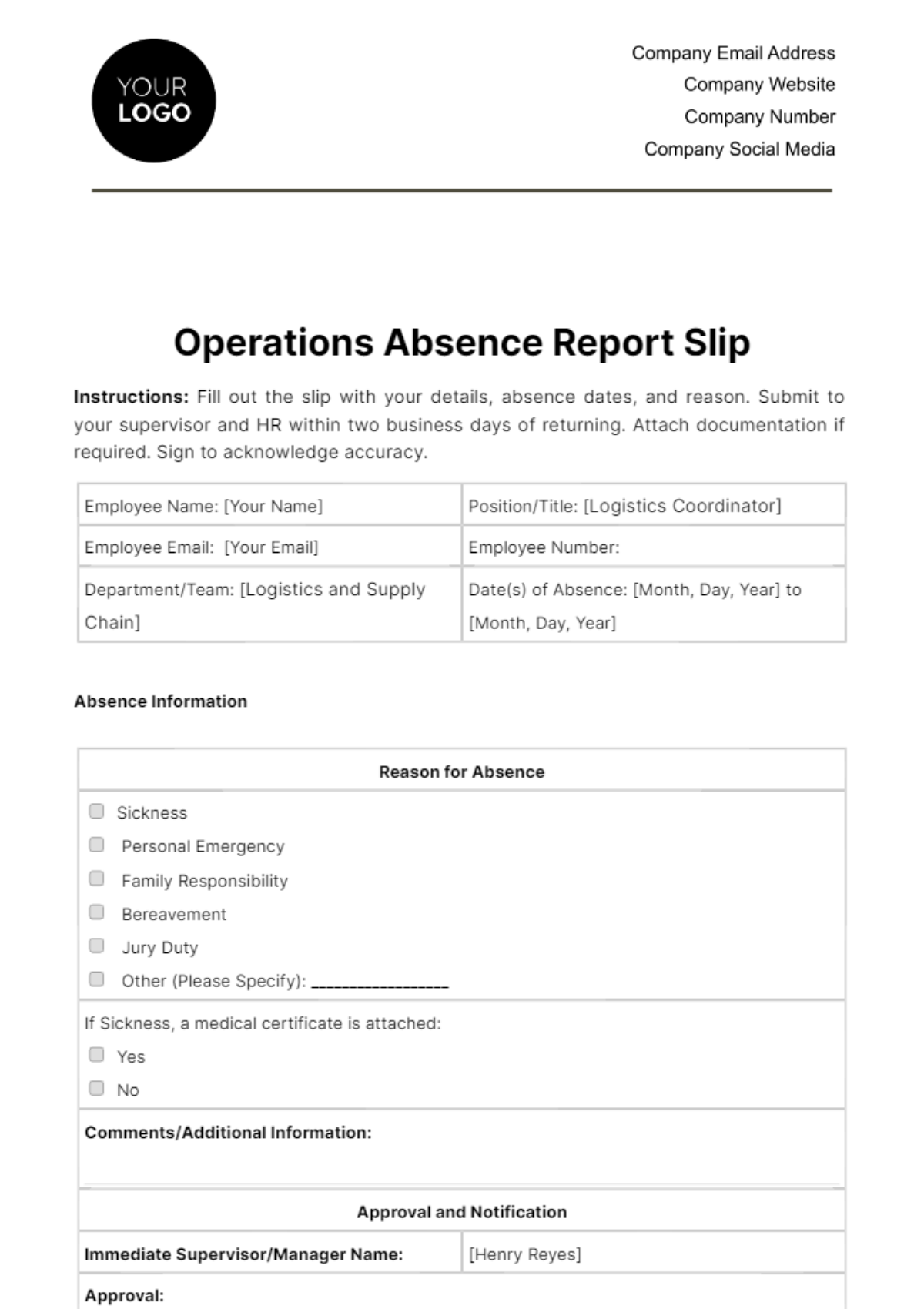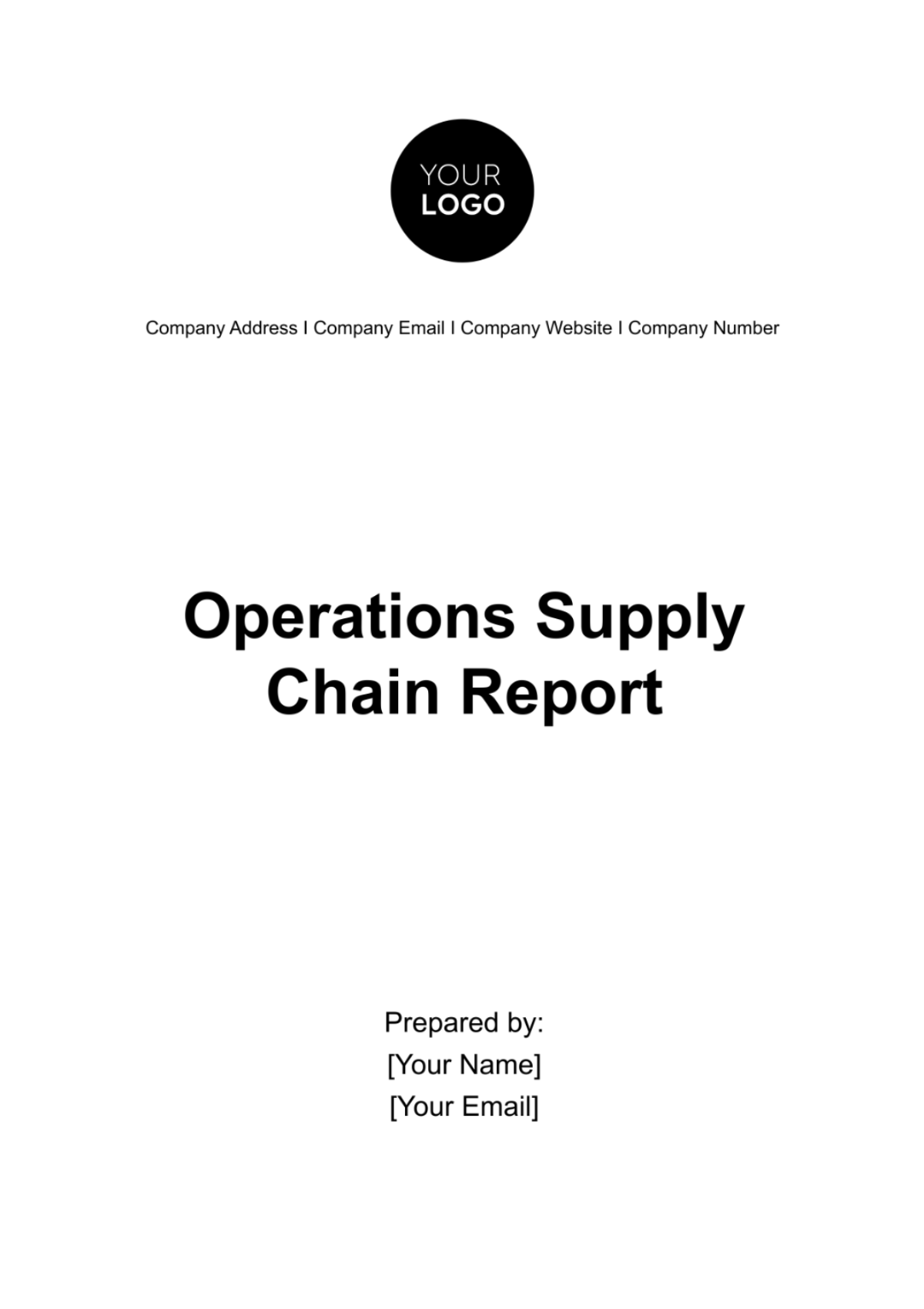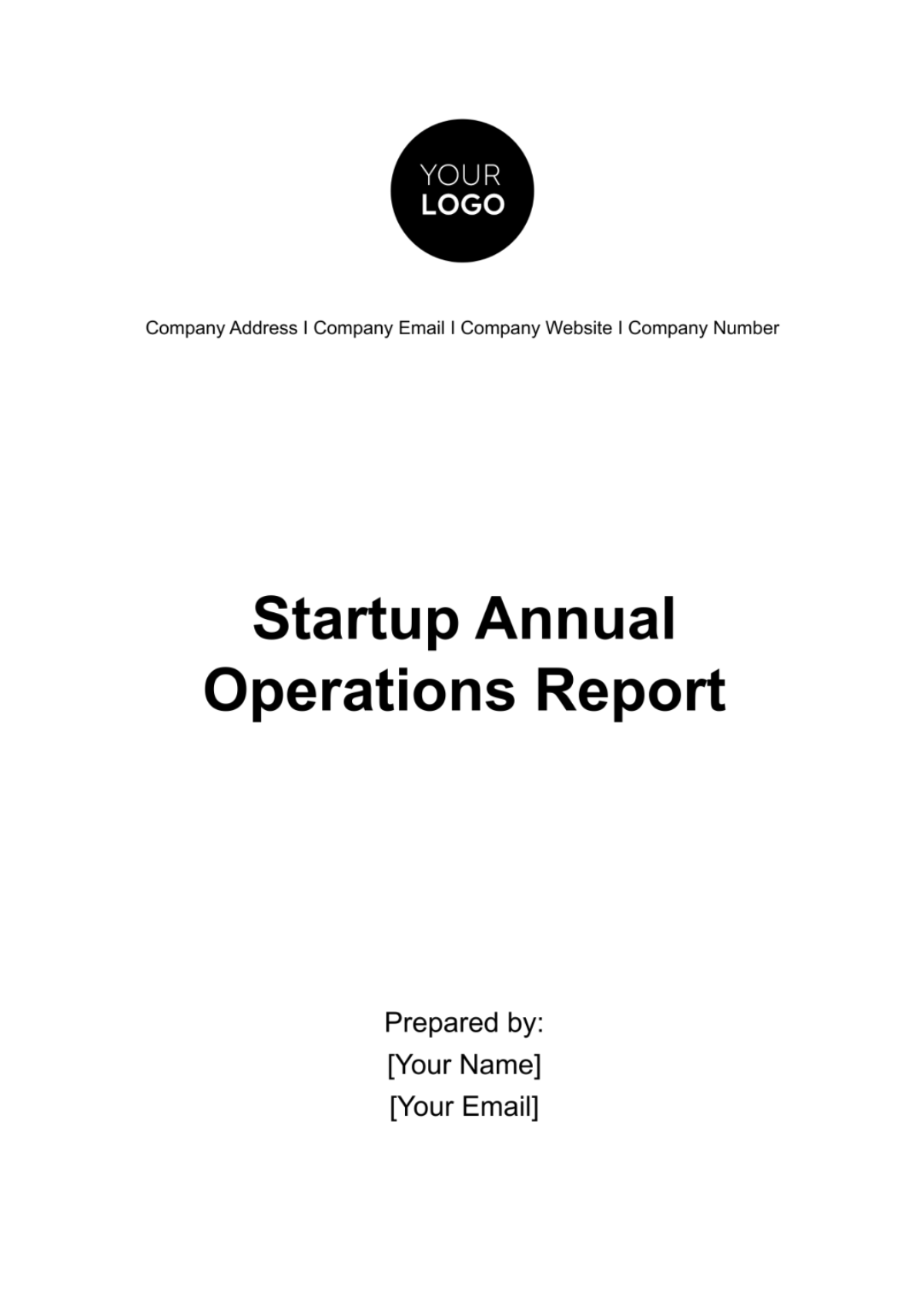Operations Compliance Report
I. Introduction
In our steadfast commitment to upholding regulatory standards and ensuring operational integrity, [Your Company Name] presents this comprehensive Compliance Report. This document serves as a testament to our dedication to transparency and accountability in all facets of our business operations.
II. Purpose
The primary purpose of this Compliance Report is to provide stakeholders with a transparent and comprehensive overview of [Your Company Name]'s adherence to regulatory requirements and internal policies. Through this report, we aim to:
Demonstrate Compliance: Clearly outline our efforts to comply with relevant regulatory frameworks and internal policies, reaffirming our commitment to ethical business practices and legal obligations.
Assess Performance: Evaluate our performance against established compliance standards, identifying areas of strength and opportunities for improvement.
Ensure Accountability: Hold ourselves accountable for maintaining regulatory compliance and provide stakeholders with assurance that we take our legal and ethical responsibilities seriously.
Support Decision-Making: Equip stakeholders with the necessary information to make informed decisions about their engagement with [Your Company Name], based on our demonstrated commitment to regulatory compliance.
Promote Transparency: Foster transparency and trust by openly communicating our compliance efforts, findings, and actions taken to address any identified non-conformities or deficiencies.
III. Regulatory Framework and Requirements
Our compliance efforts are grounded in a robust understanding of the regulatory landscape within which we operate. This section provides an exhaustive overview of the regulatory frameworks and requirements pertinent to our industry and geographic location.
A. Financial Regulations:
Compliance with relevant financial laws and regulations, including tax laws, auditing standards, and financial reporting requirements.
Adherence to generally accepted accounting principles (GAAP) and International Financial Reporting Standards (IFRS) for accurate financial reporting.
B. Human Resource Management:
Compliance with labor laws and regulations regarding employee rights, working conditions, wages, and benefits.
Implementation of fair employment practices, including non-discrimination, equal opportunity, and workplace safety measures.
C. Data Protection Protocols:
Compliance with data protection laws, such as the General Data Protection Regulation (GDPR) or the California Consumer Privacy Act (CCPA).
Implementation of robust data privacy and security measures to safeguard sensitive information collected from customers, employees, and other stakeholders.
D. Product Quality Assurance:
Adherence to product safety regulations and quality standards applicable to [Your Company Name]'s products or services.
Implementation of quality assurance processes to ensure products meet regulatory requirements and customer expectations.
E. Environmental Sustainability Initiatives:
Compliance with environmental laws and regulations aimed at minimizing environmental impact and promoting sustainable practices.
Implementation of initiatives to reduce carbon footprint, conserve natural resources, and promote environmental stewardship.
IV. Scope of Compliance Assessment
To ensure a thorough assessment, our compliance evaluation spans across all operational domains of [Your Company Name]. This includes but is not limited to financial practices, human resource management, data protection protocols, product quality assurance, and environmental sustainability initiatives. By casting a wide net, we aim to leave no stone unturned in our quest for regulatory adherence.
A. Financial Practices:
Audit of Financial Transactions: Conduct a comprehensive review of financial records, including income statements, balance sheets, and cash flow statements, to ensure accuracy, transparency, and compliance with accounting standards.
Internal Controls Evaluation: Assess the effectiveness of internal control mechanisms for financial reporting and transaction processing, identifying areas for improvement to mitigate the risk of fraud or financial mismanagement.
B. Human Resource Management:
Employment Practices Review: Evaluate HR policies and procedures related to recruitment, hiring, compensation, performance management, and termination to ensure compliance with labor laws and regulations.
Workforce Diversity and Inclusion: Assess efforts to promote diversity, equity, and inclusion within the workforce, ensuring fair treatment of employees and adherence to anti-discrimination laws.
C. Data Protection Protocols:
Data Privacy Compliance: Review data handling practices, including data collection, storage, and sharing processes, to ensure compliance with applicable data protection regulations such as GDPR or CCPA.
Information Security Measures: Evaluate the effectiveness of cybersecurity measures and safeguards to protect sensitive information from unauthorized access, breaches, or cyber threats.
D. Product Quality Assurance:
Quality Control Processes: Assess procedures for monitoring and maintaining product quality throughout the production process, including inspections, testing, and adherence to quality standards.
Product Safety Compliance: Verify compliance with product safety regulations and standards to ensure that products meet regulatory requirements and pose no health or safety risks to consumers.
E. Environmental Sustainability Initiatives:
Environmental Impact Assessment: Evaluate the environmental impact of [Your Company Name]'s operations, products, and services, identifying areas for improvement in resource efficiency, waste management, and pollution reduction.
Compliance with Environmental Regulations: Ensure compliance with environmental laws and regulations governing air and water quality, waste disposal, and environmental conservation efforts.
V. Methodology
Our compliance assessment methodology is characterized by its meticulousness and rigor. Leveraging a combination of internal audits, external reviews conducted by regulatory bodies or third-party auditors, employee interviews, document reviews, and comprehensive risk assessments, we adopt a holistic approach to evaluating compliance. This methodology allows us to gain deep insights into our compliance posture and identify areas for improvement.
A. Internal Audits:
Audit Planning: Develop an audit plan outlining the scope, objectives, and criteria for conducting internal audits across various operational areas, ensuring comprehensive coverage of compliance requirements.
Fieldwork Execution: Conduct on-site audits and reviews of operational processes, financial records, and internal controls, utilizing standardized audit procedures and techniques to identify compliance gaps and areas of improvement.
Data Analysis: Analyze audit findings and observations to assess compliance with regulatory requirements, internal policies, and industry best practices, identifying trends, patterns, and areas of non-compliance for further investigation.
B. External Reviews:
Regulatory Body Assessments: Collaborate with regulatory authorities and external agencies to facilitate compliance assessments and regulatory inspections, providing requested documentation, conducting facility tours, and addressing regulatory inquiries to ensure transparency and cooperation.
Third-Party Audits: Engage third-party auditors or consulting firms to conduct independent compliance audits and reviews, leveraging their expertise and specialized knowledge to validate internal controls, assess compliance performance, and identify areas for improvement.
C. Employee Interviews:
Interview Preparation: Prepare interview protocols and questionnaires to gather insights from key stakeholders and subject matter experts within [Your Company Name], including management, department heads, and frontline employees.
Interview Conduct: Conduct structured interviews and discussions with employees to solicit feedback, identify operational challenges, and assess awareness of compliance requirements, ensuring confidentiality and anonymity to encourage open communication.
D. Document Reviews:
Document Collection: Gather relevant documents, records, policies, procedures, and internal reports related to compliance activities, regulatory filings, and quality management systems for review and analysis.
Document Examination: Review and analyze documentation to verify adherence to established policies, procedures, and regulatory requirements, identifying discrepancies, inconsistencies, or gaps in documentation that may indicate compliance issues or areas for improvement.
E. Comprehensive Risk Assessments:
Risk Identification: Identify and assess potential compliance risks and vulnerabilities associated with [Your Company Name]'s operations, processes, products, and services, considering internal and external factors that may impact compliance performance.
Risk Prioritization: Prioritize identified risks based on their likelihood of occurrence, potential impact on business objectives, and severity of consequences, allowing for focused attention and resource allocation to high-risk areas.
Risk Mitigation Strategies: Develop risk mitigation strategies and action plans to address identified risks, implementing controls, safeguards, and preventive measures to reduce the likelihood of non-compliance and minimize the impact of potential risks on [Your Company Name]'s operations and reputation.
VI. Compliance Findings
We present the findings of our compliance assessment in a transparent and candid manner in the table below. We categorize our compliance status into three distinct categories: fully compliant, partially compliant, and non-compliant. By delineating these findings, we provide stakeholders with a clear understanding of where [Your Company Name] stands concerning regulatory adherence.
Operational Area | Compliance Status | Comments |
|---|---|---|
Financial Practices | Fully Compliant | [Your Company Name] consistently follows Generally Accepted Accounting Principles (GAAP) in financial reporting |
Partially Compliant | Occasional delays in financial reporting deadlines | |
Non-Compliant | Deficiencies in internal control processes | |
VII. Non-Conformities and Deficiencies
Wherever non-conformities or deficiencies are identified, we document them meticulously in this section. Each non-compliance issue is thoroughly analyzed to understand its root causes and potential impacts on our operations and regulatory compliance. By shedding light on these areas of concern, we pave the way for targeted corrective action.
Inadequate Documentation: Lack of proper documentation of financial transactions, employee records, or safety protocols, leading to difficulties in demonstrating compliance and ensuring accountability.
Insufficient Training Programs: Absence of comprehensive training programs for employees regarding data protection, workplace safety procedures, or regulatory requirements, resulting in increased risks of non-compliance and operational errors.
Poor Record-Keeping Practices: Failure to maintain accurate and up-to-date records related to product quality testing, customer complaints, or environmental impact assessments, hindering effective monitoring of compliance and regulatory reporting.
Non-Compliance with Reporting Obligations: Failure to submit required regulatory reports, such as financial disclosures, safety incident reports, or environmental impact assessments, resulting in penalties, reputational damage, and potential legal consequences.
Lack of Internal Controls: Weaknesses in internal control mechanisms, such as segregation of duties, authorization processes, or access controls, leading to increased vulnerability to fraud, errors, and regulatory breaches.
VIII. Corrective Actions Taken
Upon identifying non-conformities or deficiencies, swift and decisive action is taken to rectify the situation. This section outlines the specific corrective measures that have been implemented to address each identified issue.
Implementation of Enhanced Documentation Procedures: Develop standardized templates and workflows for documenting financial transactions, employee records, and safety protocols. Provide training to staff on proper documentation practices and establish regular audits to ensure compliance.
Expansion of Training Programs: Enhance existing training programs or develop new ones to cover essential topics such as data protection, workplace safety, and regulatory requirements. Implement a structured training schedule and track employee participation to ensure comprehensive coverage.
Improvement of Record-Keeping Systems: Upgrade record-keeping systems to ensure the accurate and timely capture of relevant information related to product quality testing, customer complaints, and environmental impact assessments. Implement regular data validation checks and establish protocols for data integrity maintenance.
Strengthening Reporting Processes: Review reporting requirements for various regulatory bodies and establish clear timelines and responsibilities for submission. Implement automated reporting tools where possible to streamline the process and reduce the risk of missed deadlines.
Enhancement of Internal Controls: Conduct a comprehensive review of internal control procedures, identify weaknesses, and implement remedial measures such as segregation of duties, enhanced authorization processes, and stricter access controls. Provide training to staff on the importance of internal controls and their role in ensuring compliance and risk management.
IX. Preventive Measures Implemented
In addition to corrective actions, proactive measures are implemented to prevent the recurrence of non-compliance issues. This section delineates the preventive measures put in place to bolster our compliance framework, mitigate risks, and fortify our resilience against future challenges.
Regular Compliance Training: Conduct ongoing training sessions for employees to ensure they are aware of relevant regulations, company policies, and best practices related to their roles and responsibilities.
Periodic Compliance Audits: Schedule regular internal audits to assess adherence to regulatory requirements, identify areas of non-compliance, and implement corrective actions promptly.
Robust Documentation Practices: Establish standardized procedures for documenting transactions, processes, and decisions to ensure accuracy, completeness, and compliance with regulatory requirements.
Continuous Monitoring Systems: Implement automated monitoring systems to track key performance indicators, identify anomalies or deviations from expected norms, and trigger alerts for timely intervention.
Enhanced Data Security Measures: Strengthen data security protocols to safeguard sensitive information against unauthorized access, breaches, and cyber threats. Implement encryption, access controls, and regular security assessments.
Supplier and Vendor Due Diligence: Conduct thorough due diligence on suppliers and vendors to assess their compliance with relevant regulations, ethical standards, and quality assurance practices.
Incident Response Protocols: Develop and implement detailed incident response protocols to address emergencies, security breaches, or compliance violations promptly. Establish clear escalation procedures and communication channels.
Regulatory Updates and Compliance Reviews: Stay abreast of regulatory changes and updates relevant to your industry and conduct regular reviews to ensure ongoing compliance with evolving requirements.
Cross-Functional Collaboration: Foster collaboration among different departments and teams to facilitate knowledge sharing, risk assessment, and coordinated efforts to address compliance challenges.
Culture of Compliance: Promote a culture of compliance and ethical conduct throughout the organization by setting clear expectations, recognizing and rewarding compliance efforts, and fostering open communication channels.
X. Conclusions
In conclusion, this Compliance Report underscores [Your Company Name]'s unwavering commitment to regulatory compliance and operational excellence. While challenges may arise, we remain steadfast in our dedication to upholding the highest standards of integrity, transparency, and accountability. By embracing a culture of compliance and continuous improvement, we strive to foster trust and confidence among our stakeholders, safeguarding our reputation and ensuring sustainable growth in the long term.
